November 14, 2021
Martha O'Kennon
After a few coolish days, we have now had a couple of fairly mild days with a little SUN just once in a while. Poor old climate!
As usual for this season, here is Jadesy on November 12, 2021, looking almost exactly the same as last week. In all other years, I have only left her outdoors until November 1, for fear she will suffer from the cold before setting flower buds. This is rather ridiculous! One thing I notice is that she has slowed down in producing leaf buds. I don't know if this is good or bad! Then the Coralberry, and then the Euonymus, which is quickly approaching Red Max.
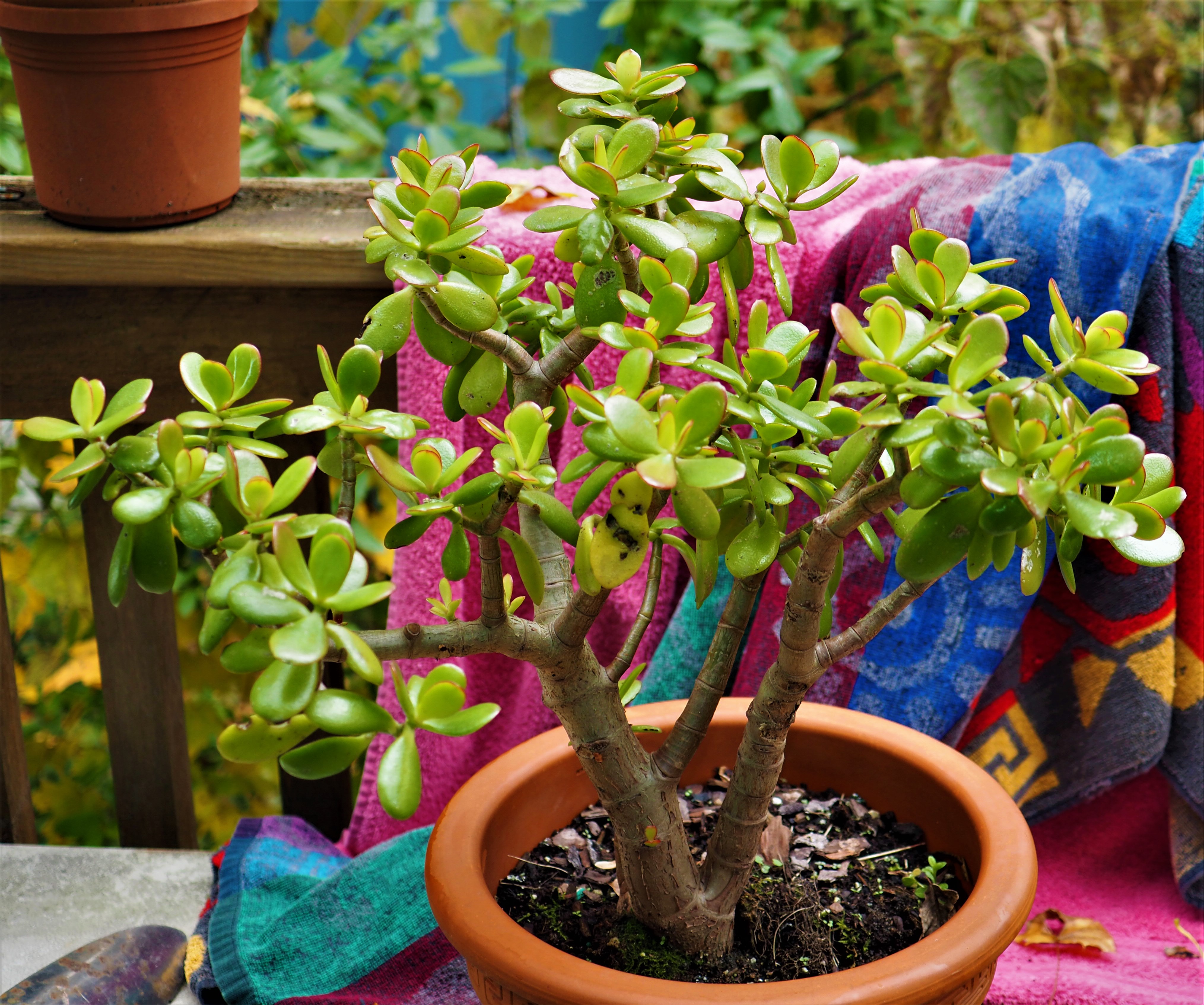
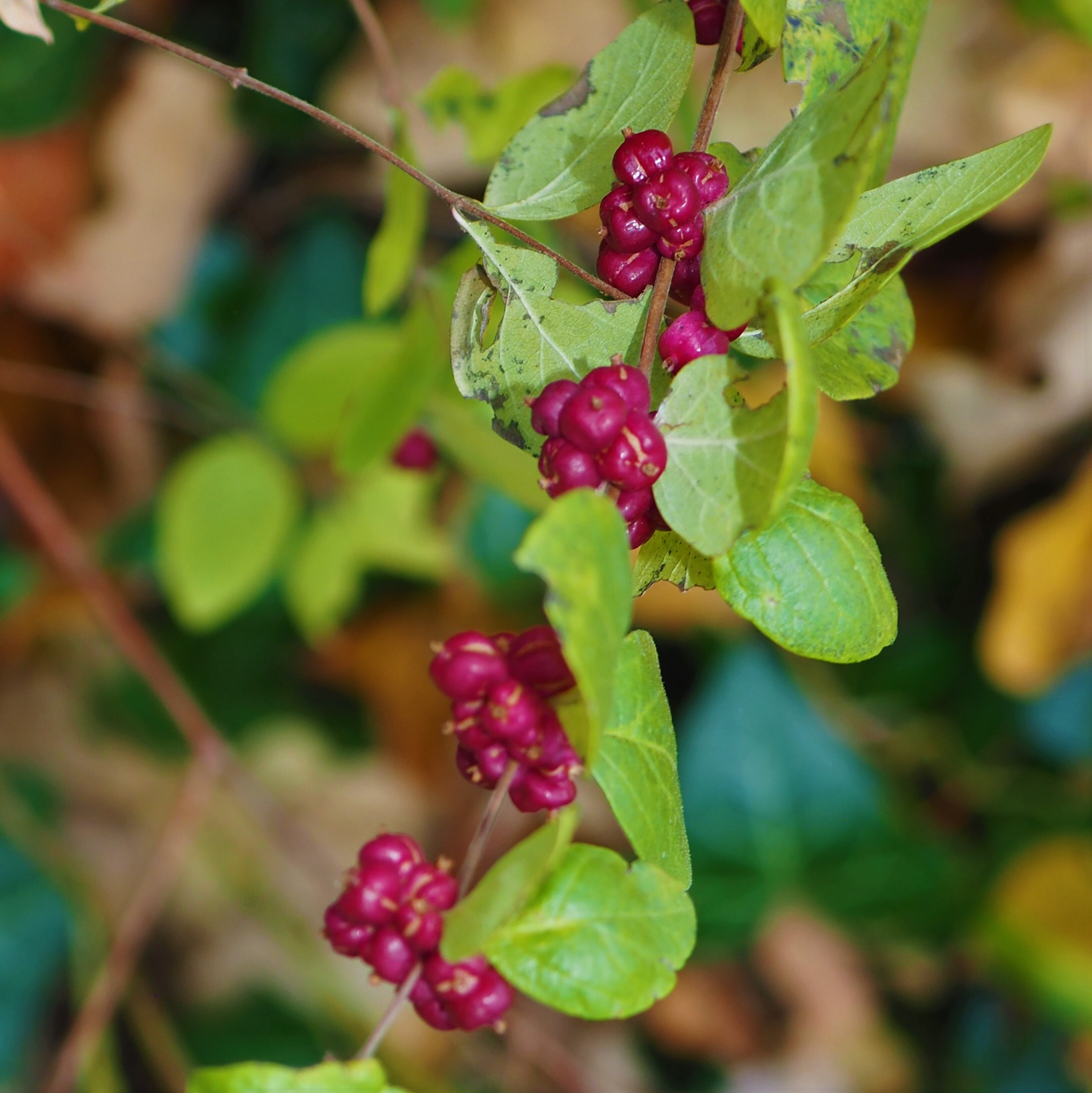
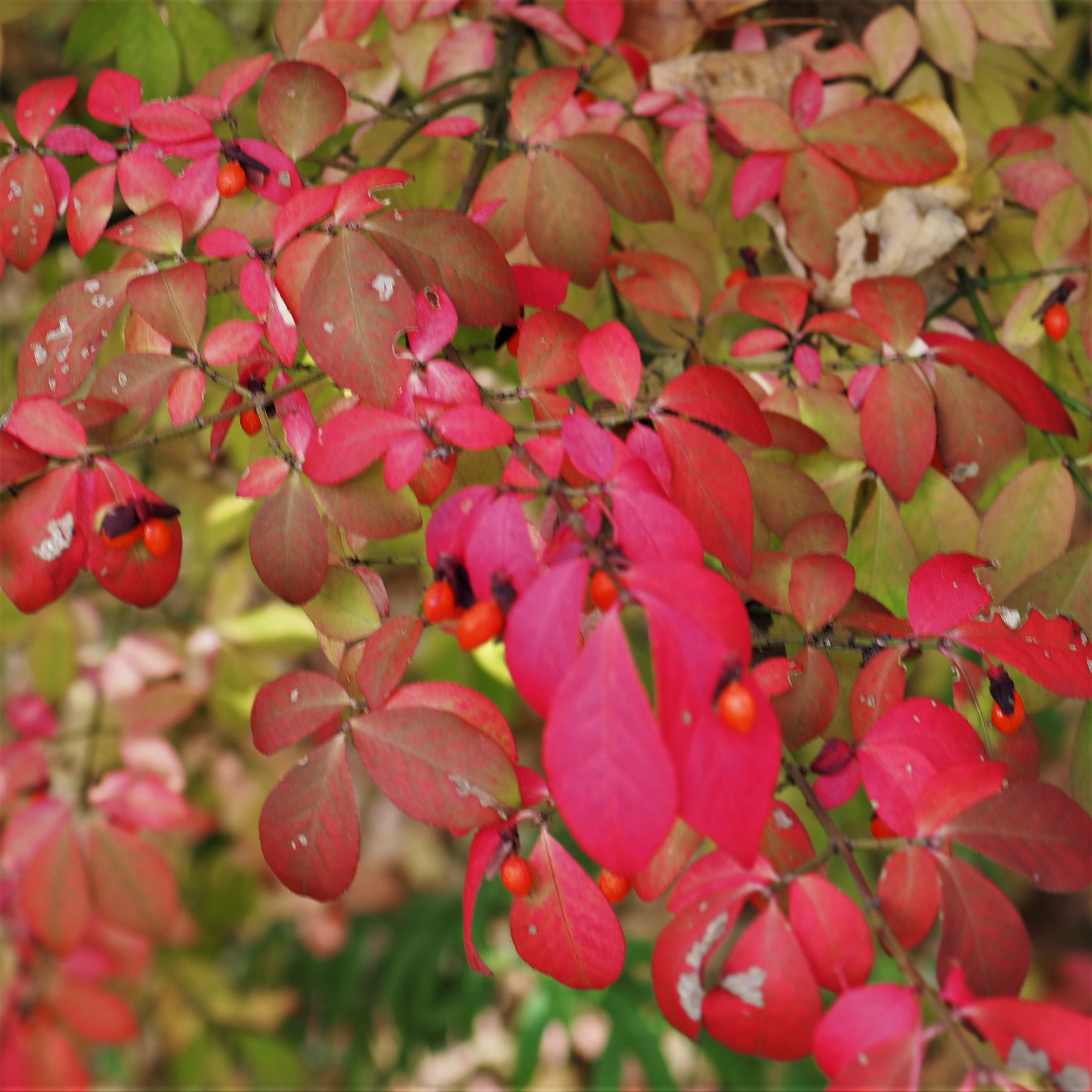
Remember that there is information in the name of the file for each image. You can see it by mousing over the
image - look at the lower left of the screen. Or you can click on the image to get to the (usually) larger image.
Then the info is displayed in the address line above. Sometimes the second click will actually display a
different view of the original image.
Remember last week, when I said "The Ants are harder and harder to find, except for the Small Honey Ants." ?
Well, the brief interlude of this week has once again made me a liar. It's true that the Small Honey Ants are the MOST plentiful of Ants this week, as in picture 1. But they seem to have gone a bit mad, as in picture 2 where we see one of them dragging another. The little gif will show that there are two sets of legs in action, but one is definitely in charge as it drags its comrade up the South Wall. The Top Ant seems to have the other's head in its mouth. Uncomfortable as this seems, I remember a while ago when an Ant was pictured with another in its mouth and Steven Wang mentioned that it seems Ants do this because it is easier for one to drag the other than to waste all the energy of having both walk by themselves. I wonder if this is the case here! Maybe the lower set of legs is actually helping! Oops. I just heard from Steven and he says they seem to be fighting, maybe they belong to rival groups.
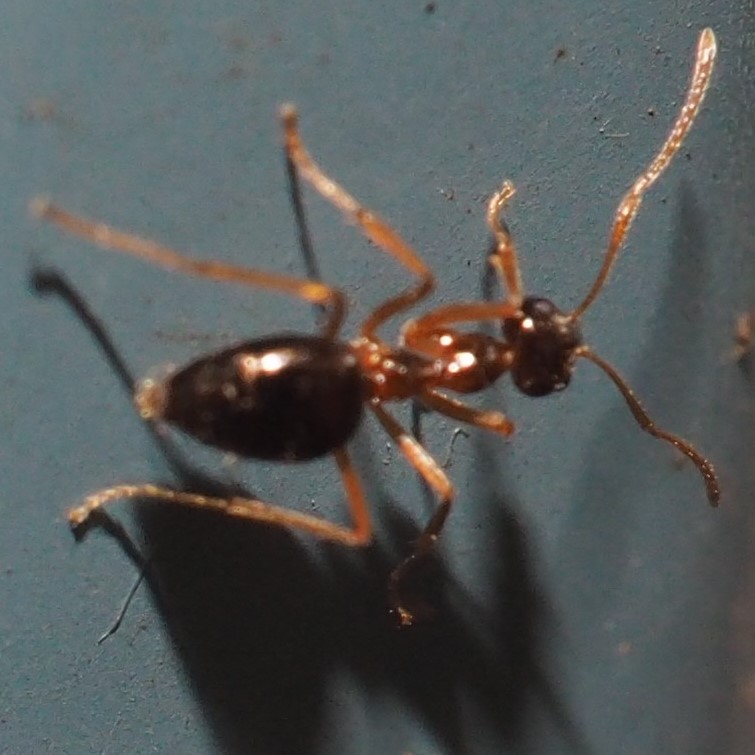
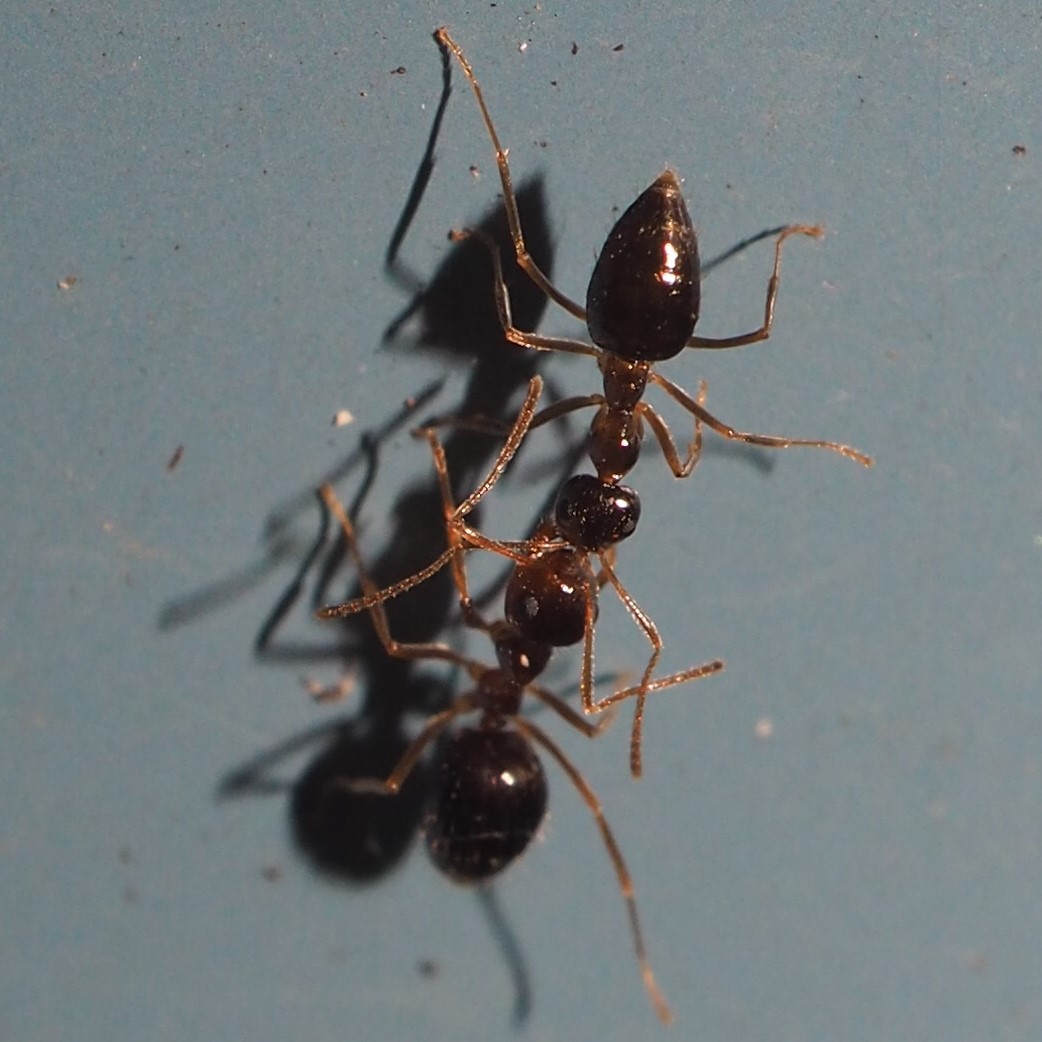
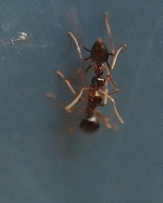
I learned something as I was checking on the Smaller Carpenter Ant (picture 1). Apparently its name has been changed (this keeps on happening!) to Nearctic Carpenter Ant. This matches its scientific name, Camponotus nearcticus and shouldn't have been a surprise, but I had completely missed the big event. So welcome, Nearctic Carpenter! Pictures 2 and 3 show an Odorous House Ant, but it looks strange because I shot it in the dark and it seems to blend into the background.
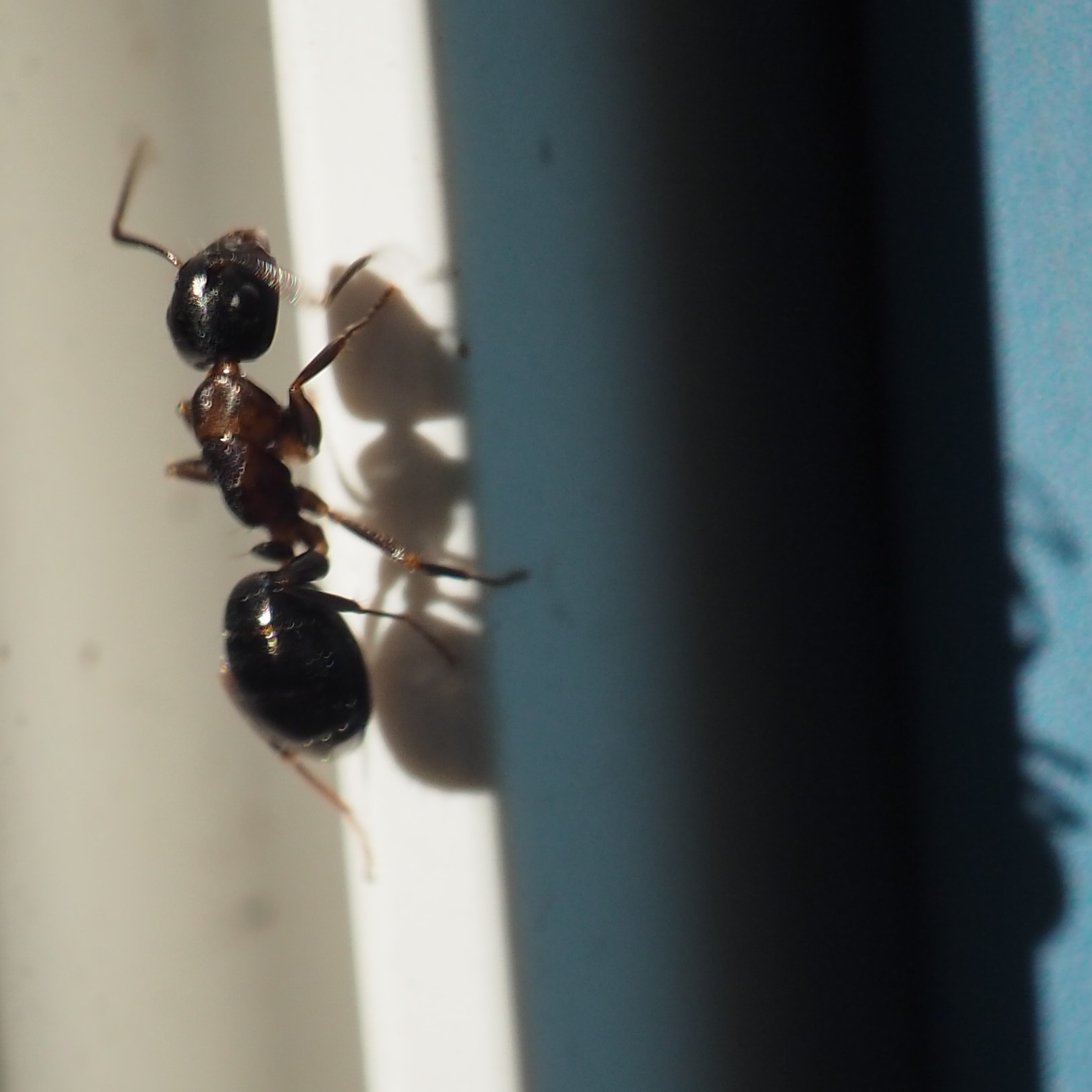
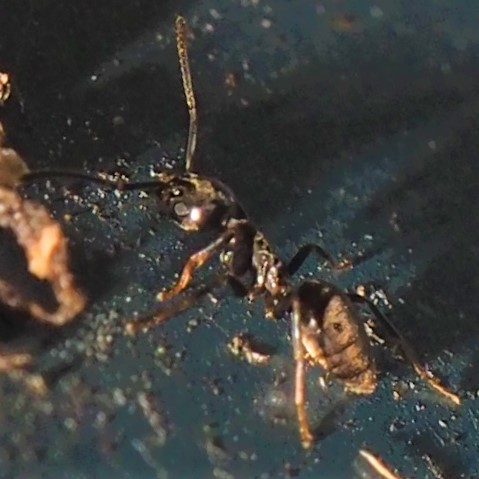
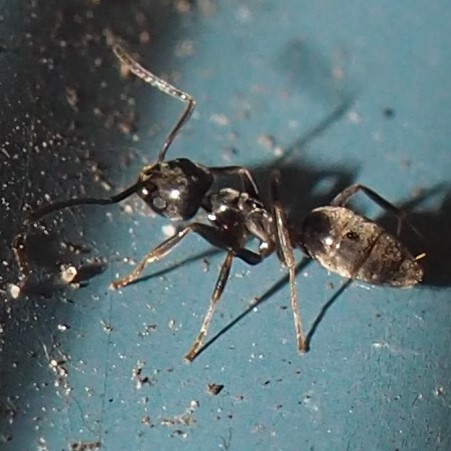
We had such a pleasant surprise when this gorgeous Queen Ant of genus Stenamma appeared on the view screen. Steven added a comment to the effect that it is a less-well-known Ant, but added to that that it had been the research object of Mary Talbot, an early (1970's and 80's) Ant-following scholar. She had studied intensively the Ant species Stenamma diecki in lower Michigan. Our lady here might be S. diecki but there are another couple of possible species too. Isn't she exquisite?
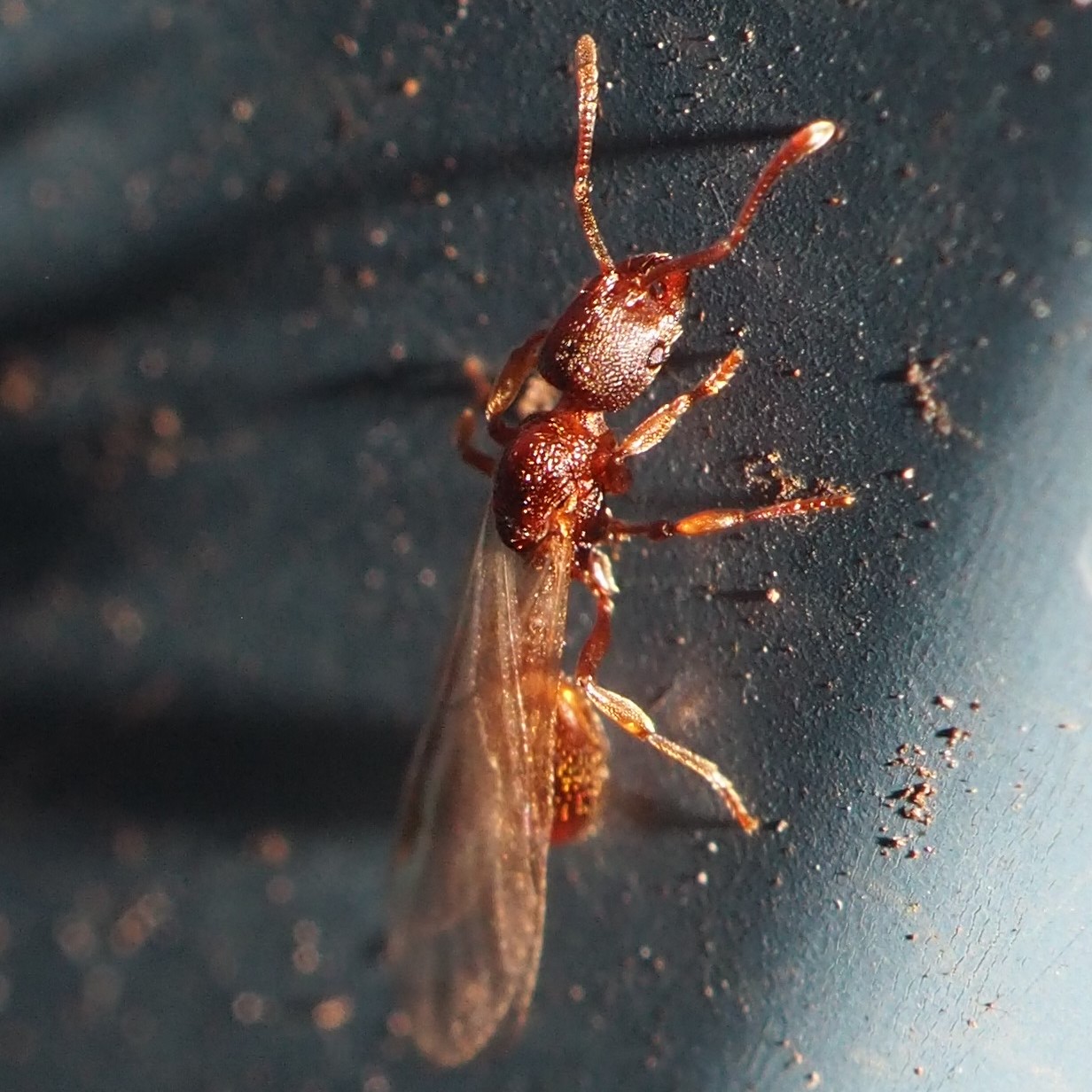
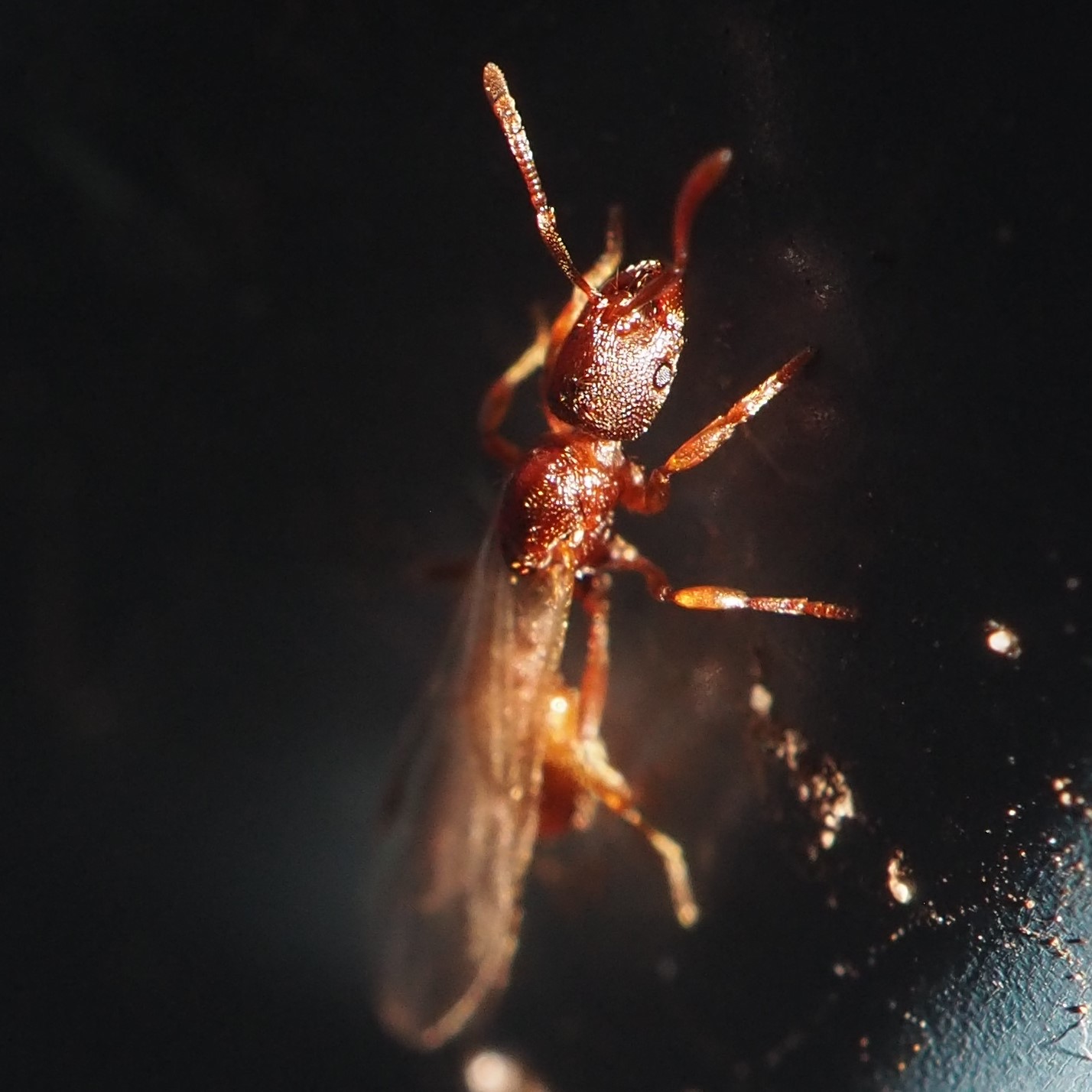
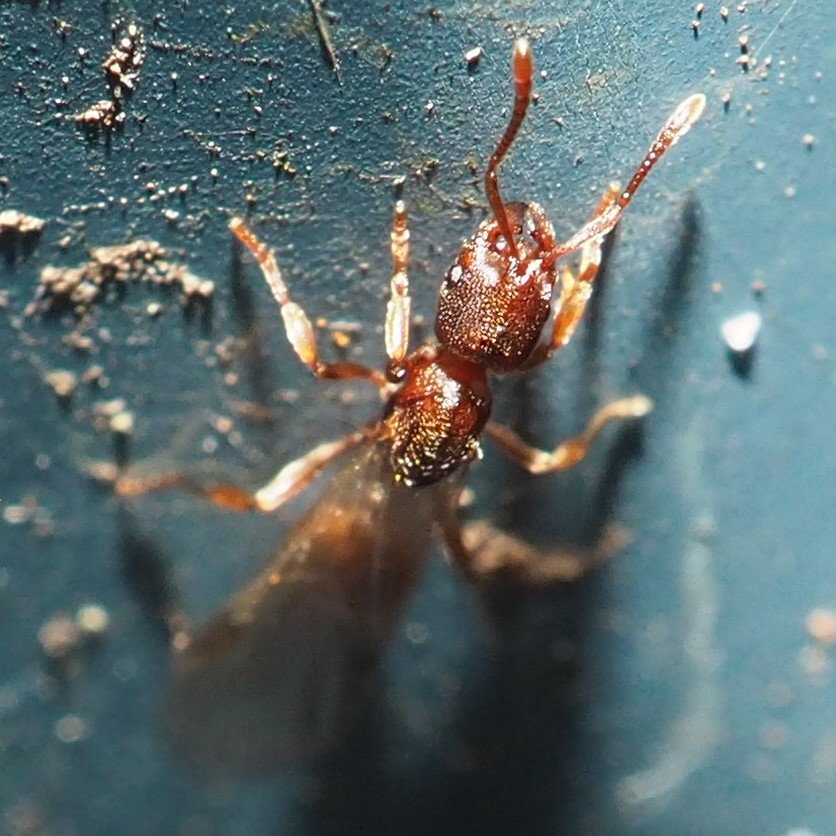
I wondered what this next Ant was until I saw the faint Spider-webbing that intimates that a Spider had at least STARTED the process of wrapping it for dinner later. I'm still not sure what it is. Another Ant that seemed to be all over the South Wall is this one. And the third one too. Have you figured it out yet? Remember that in the past few weeks we've seen this Ant (or is it an Ant-mimicking Spider?) all over the Wall. Yes, it is that very Ant-mimic Sac Spider again! Did it fool you (as it did me at first sight)? Well, don't feel bad. The fact that on one side it seems to have only three legs instead of four is a good reason to leap to the conclusion that it's really an Ant. We'll see more pictures of the Spider when we get to the Spider section nearer the end of this Blog.
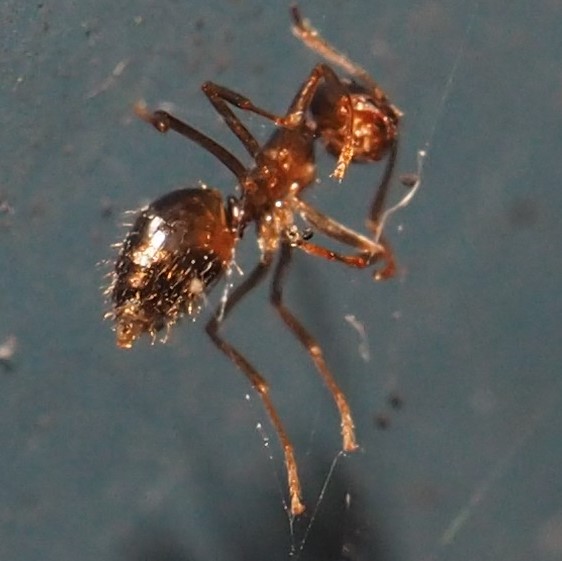
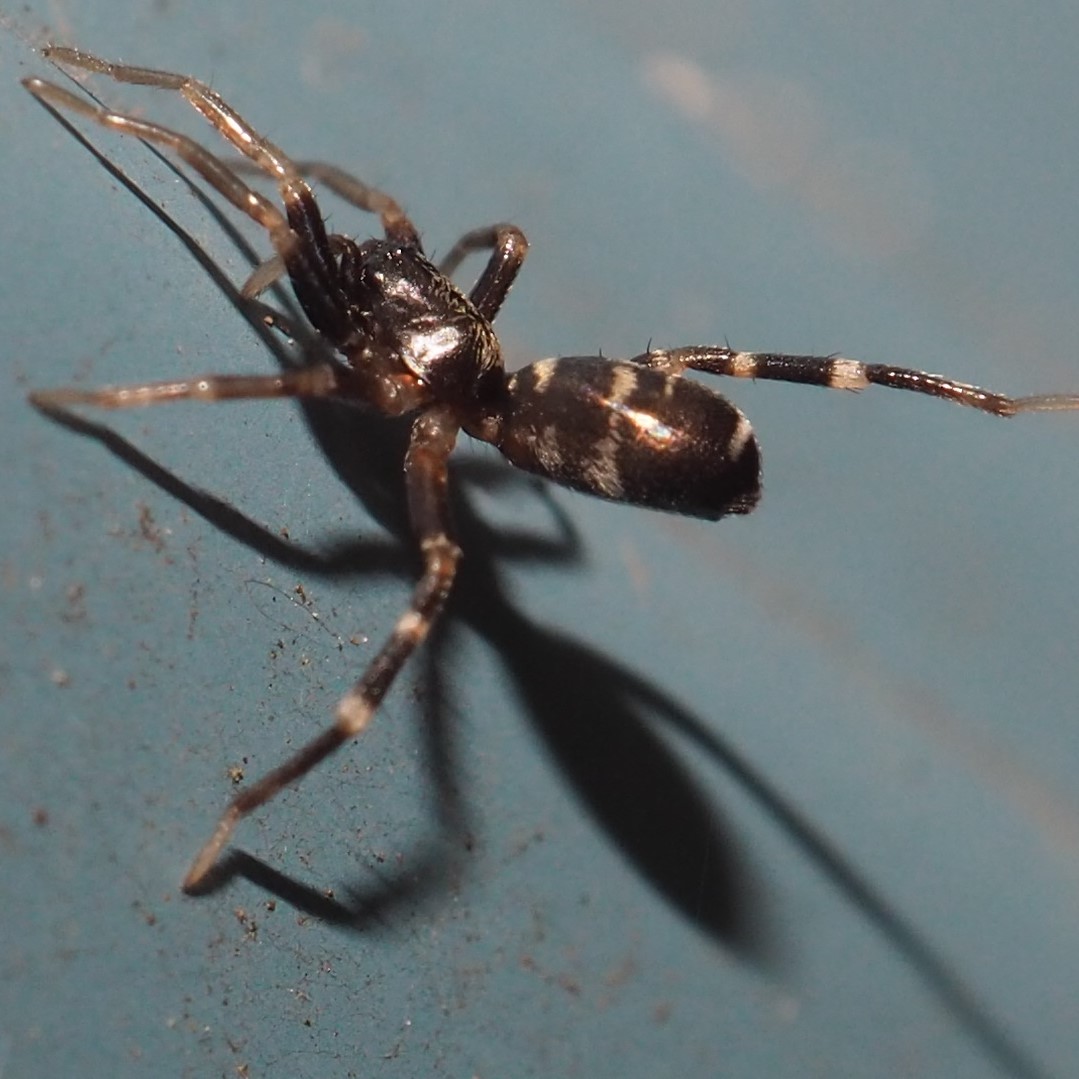
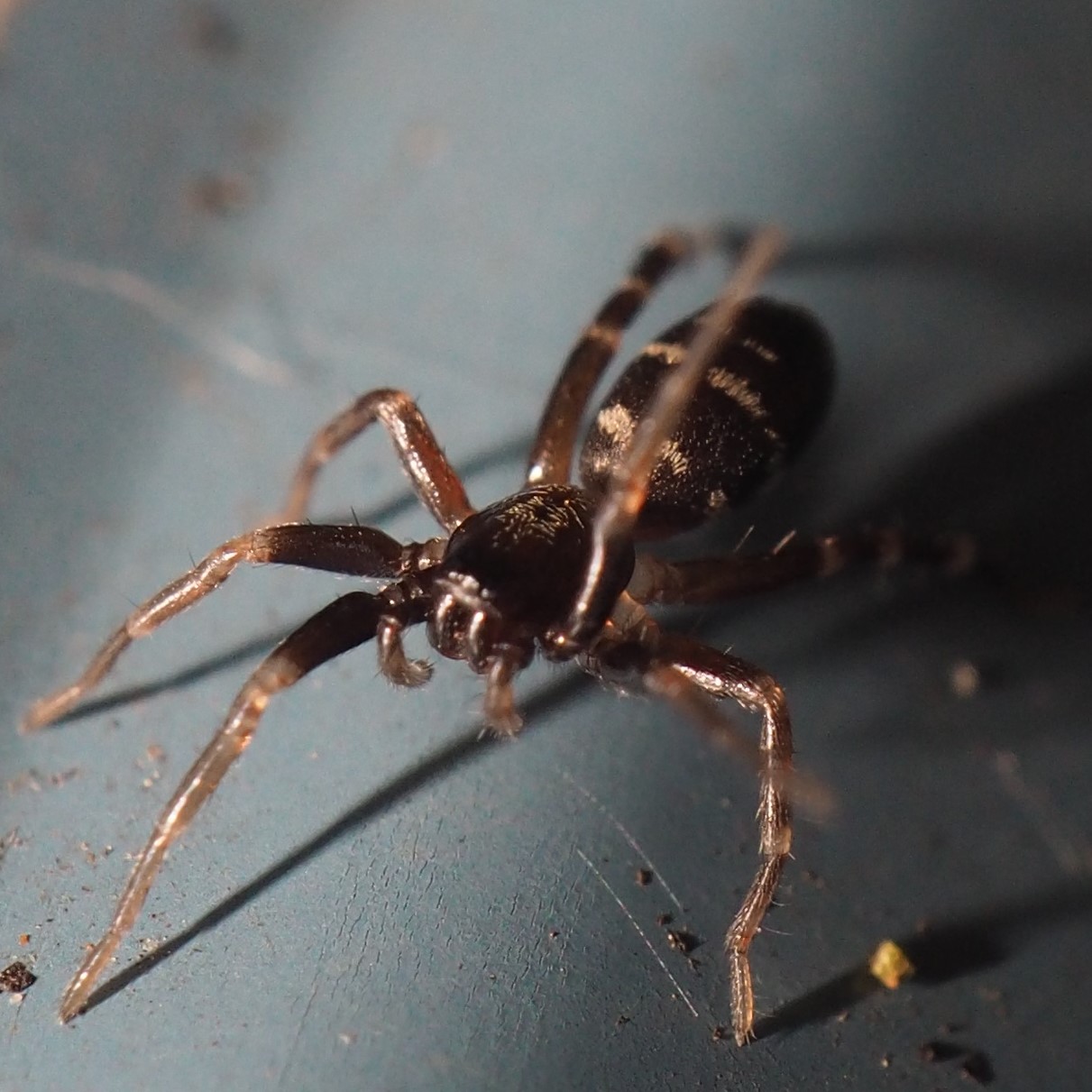
So on to the Barklice. I'm now almost sure that they are disappearing to the space underneath the Woodshop. It will be warmer for them in the Winter (I told you the Shop is heated to 40 F). But let's see who our faithful friends are who are still going through the life processes. The most common ones to see are Graphopsocus cruciatus and Valenzuela flavidus. Here are the best of the many pictures of G. cruciatus, starting with an egg mass. Picture two shows Adult and Nymph together under their characteristic webbing, while picture 3 shows what I think is a Nymph struggling to accomplish a moult, in which it will escape and start its life as an Adult..
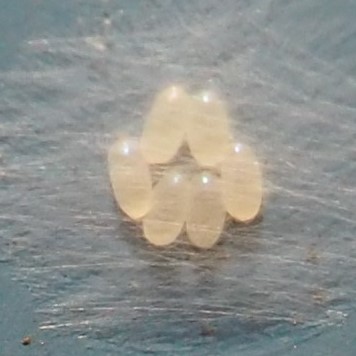
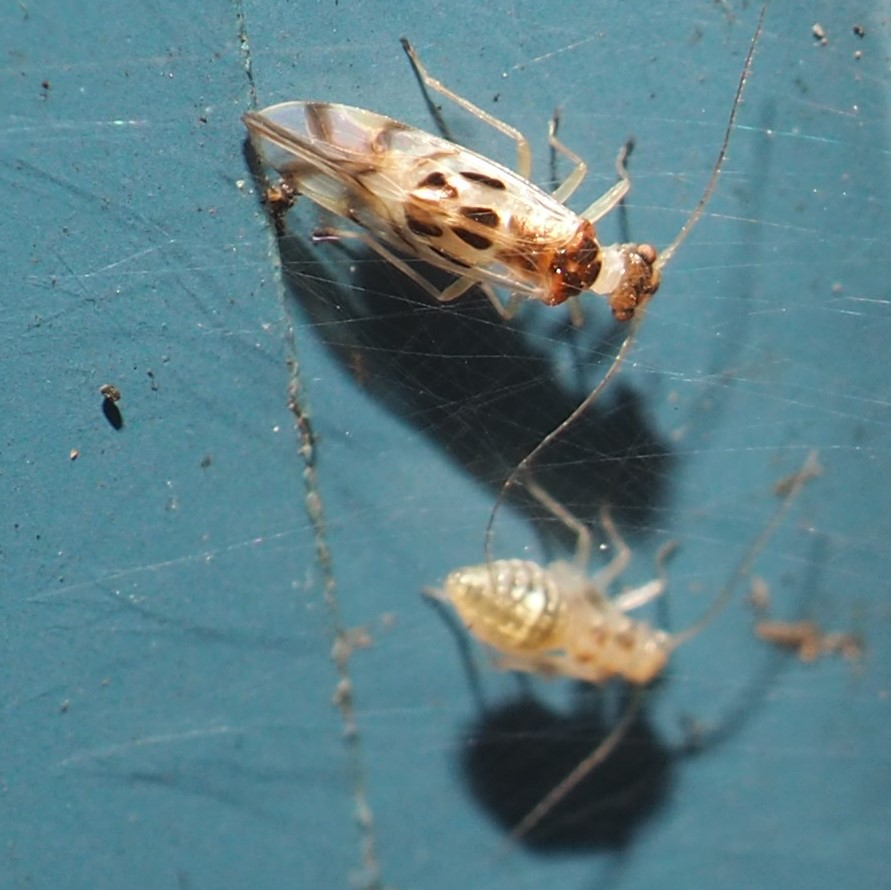
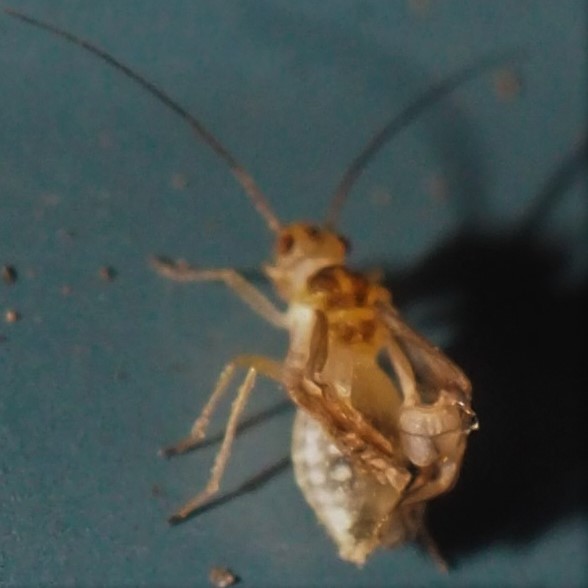
I still haven't familiarized myself with the eggs of Valenzuela flavidus, but here is an Adult, followed by a Nymph. Last is an Adult emerging from a moult. Note the very light coloring, which will over the next couple of days deepen into the characteristic color of an Adult. One wing is still folded but will soon straighten itself.
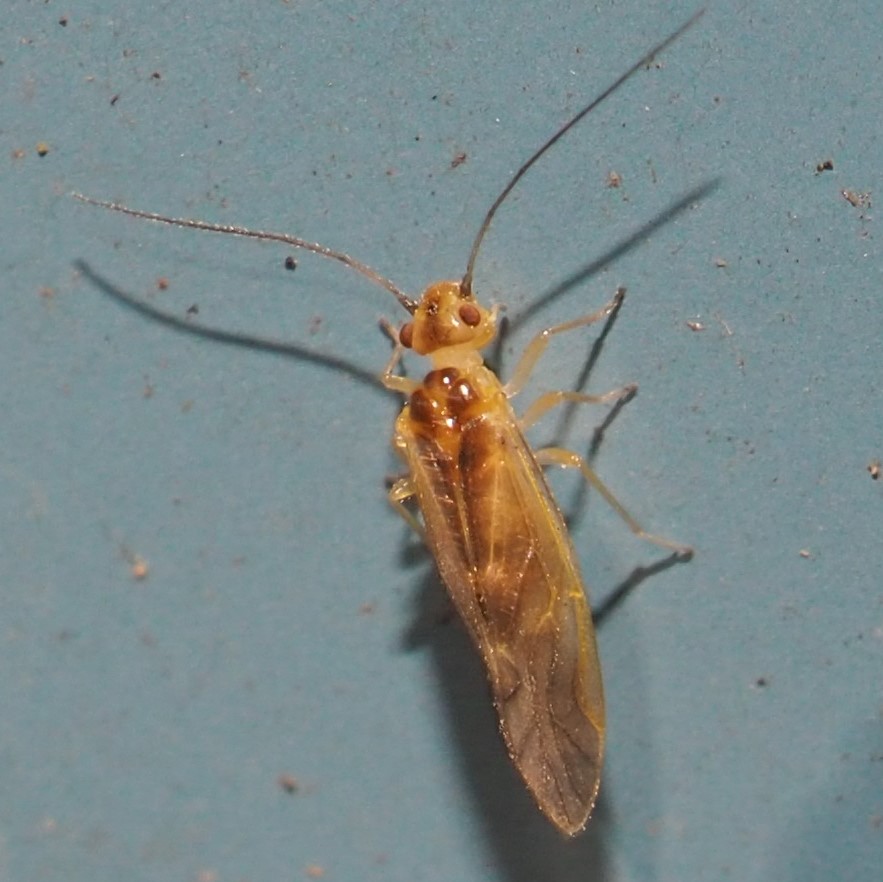

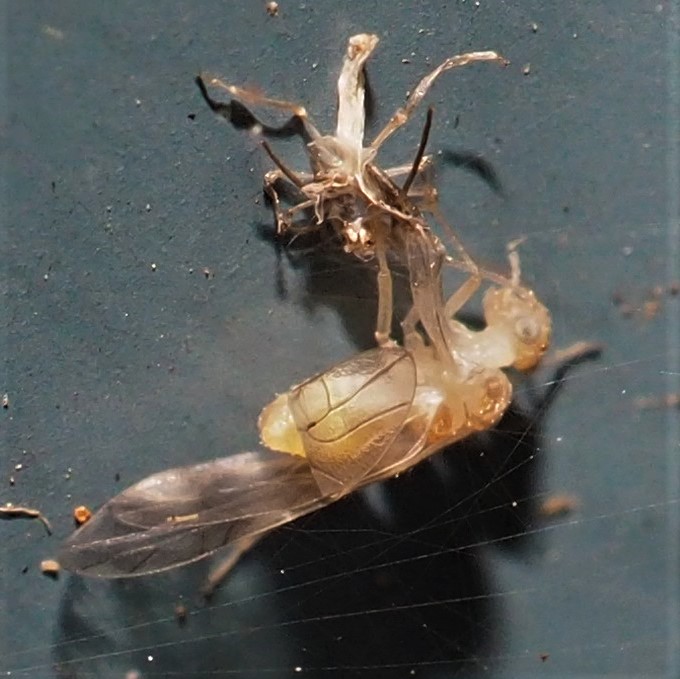
One or more BROWN Barklice have been seen on the Wall at different places in the past few weeks. Here is one that has just been identified by Scott Shreve of iNat as a Large-winged Psocid, Ectopsocopsis cryptomeriae. Pictures 2 and 3 are some shots from last week. I think Scott really pulled it together.
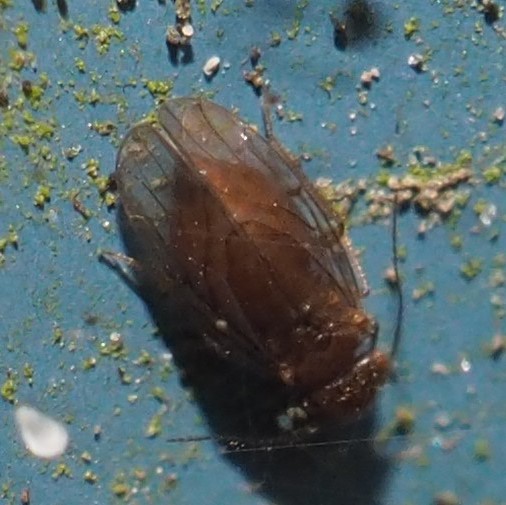
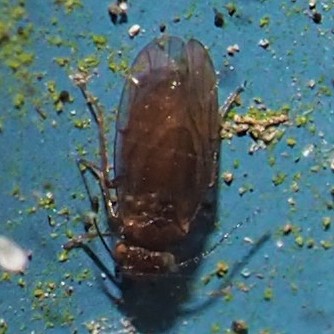
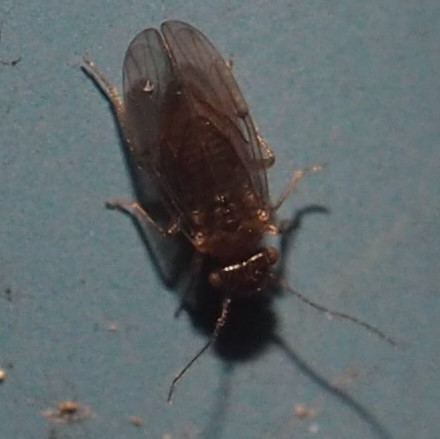
The Ectopsocus meridionalis have been out of sight for over a week. But here is a Nymph that showed up on the Wall a couple of days back. It does move quickly, as shown in this little gif. If you keep your eyes on the little patch of solid greenish lichen, you'll see the Barklouse come to it and seem to pause for a bit, seem to take a healthy bite or two, and when it has passed by the lichen seems to have some indentations in it.
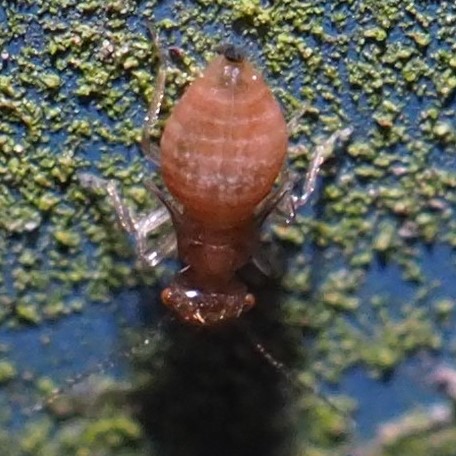
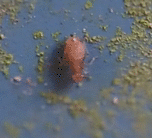
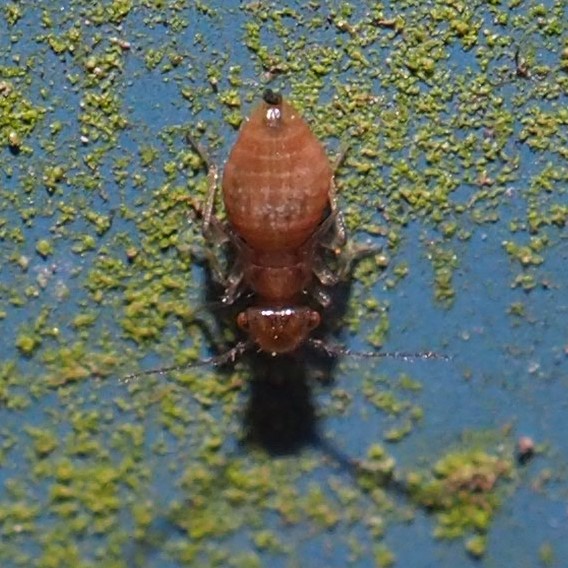
Here are some eggs, which I'm assuming are Barklouse eggs, in a brownish mass. Individual eggs seem to be pulling apart.. Maybe soon we'll see what they hatch out to be.
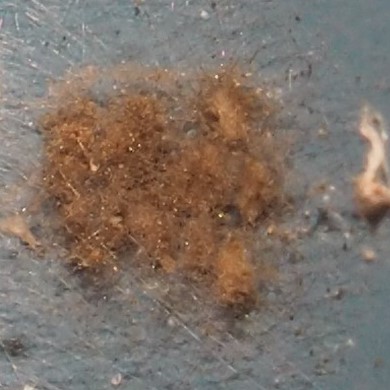

Let's see if we have more Beetles than we saw last week. Well, if we looked just at the Asian Lady Beetles, we have quite a few different colors, including the ones represented here.
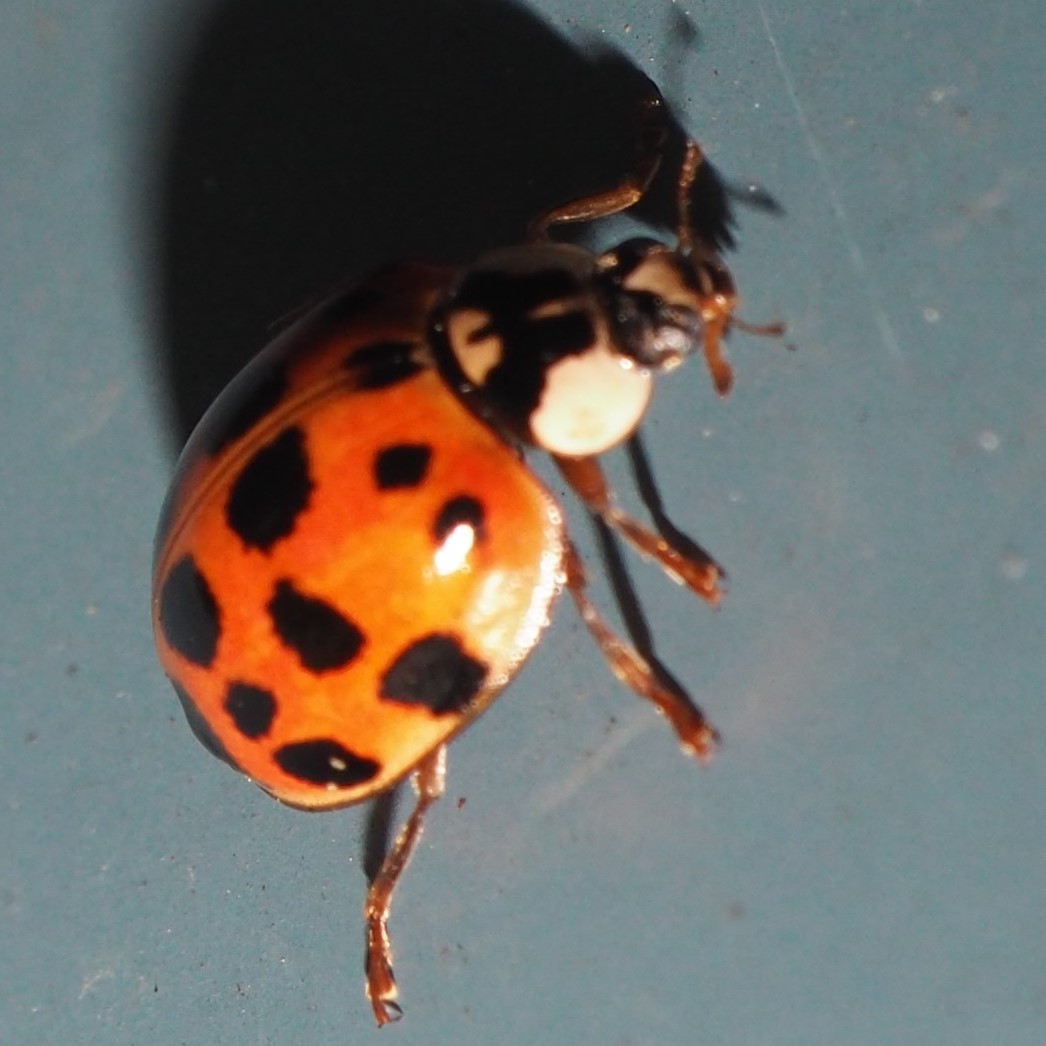
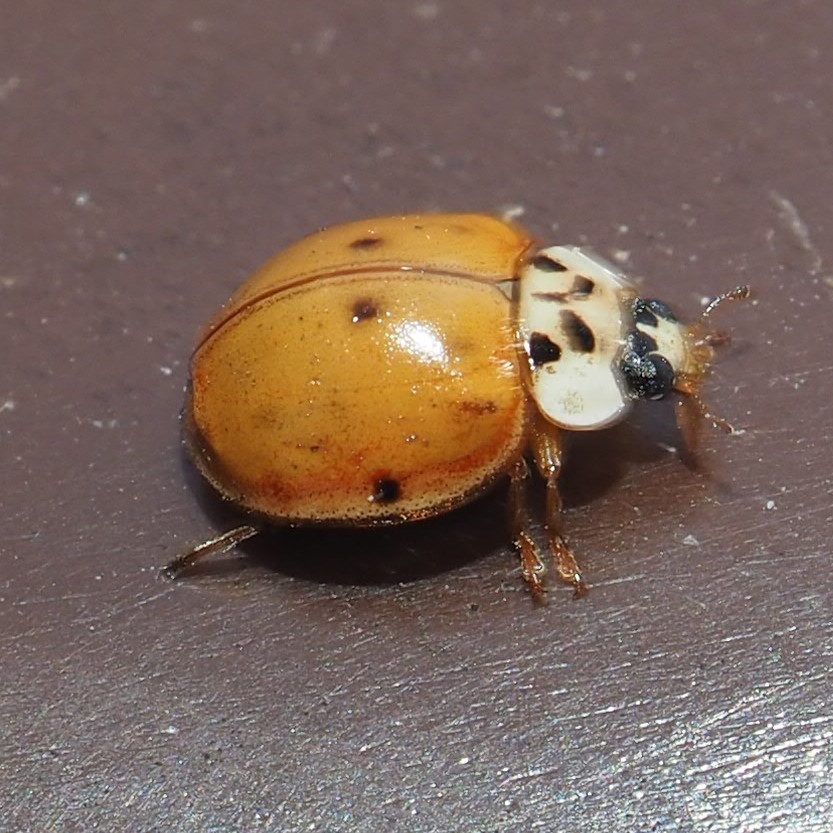
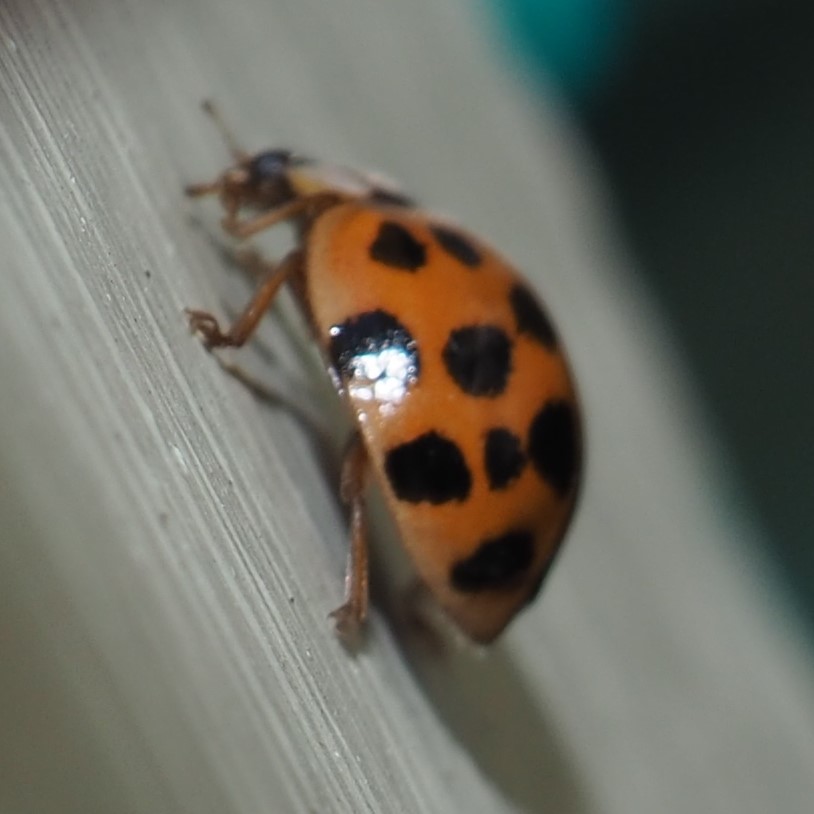
Our friend in Berlin, @borisb, says this first one is a Flea Beetle. Next is a metallic copper-colored Beetle.
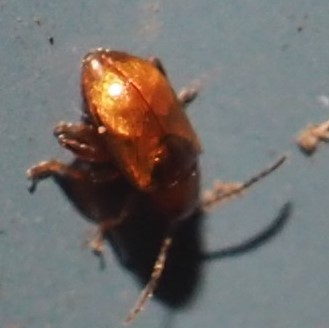

Over the years I've spotted a few Weevils with the word "Clover" in their commmon names. This first one is the Clover Leaf Weevil. This is the first one of those I've ever seen. Coleopterist @sdjbrown of iNat made the ID. Next is called the Clover Weevil, found on May 5, 2021. Third is the White Clover Weevil, found in March 2, 2020. Funny how things of almost the exact same name are so different!
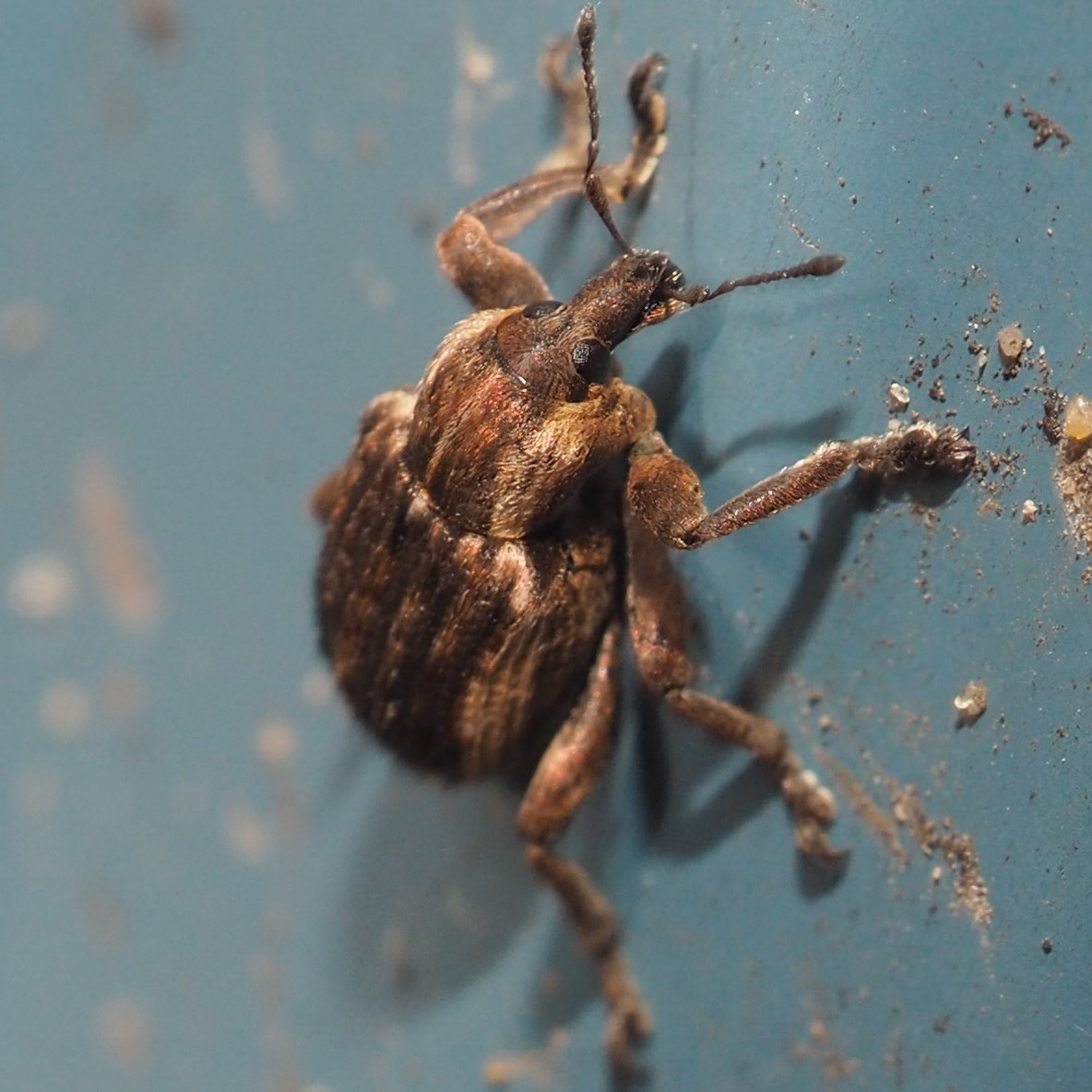
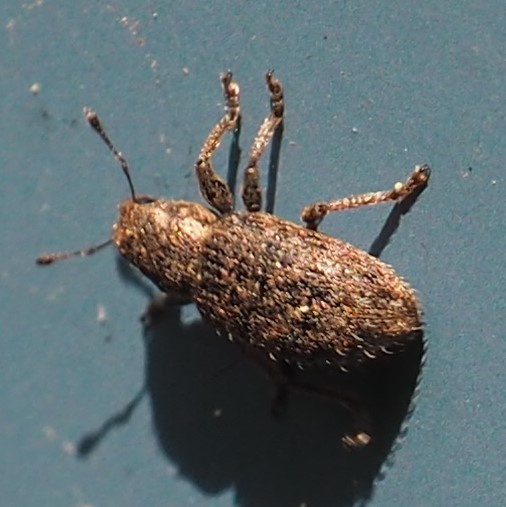
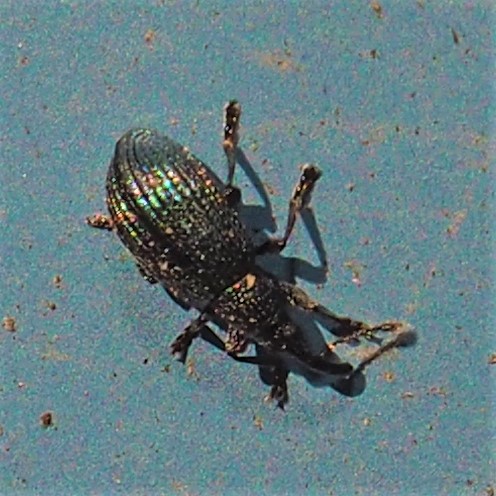
The Eastern Boxelder Bug is back! It has the same wounded wing as the last one we saw... Third is Drymus unus, still patrolling the Shop siding nearest the Goldenrod.

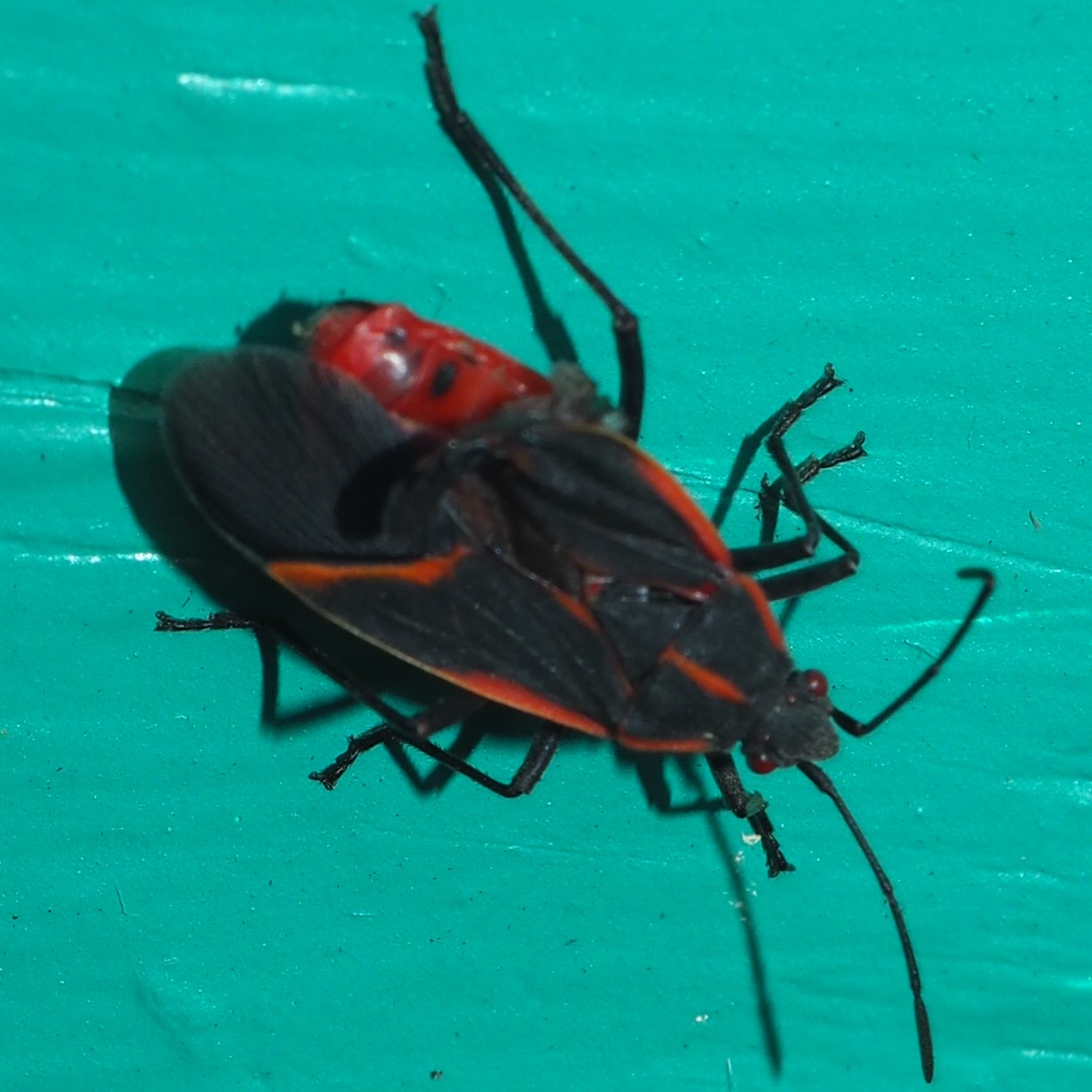
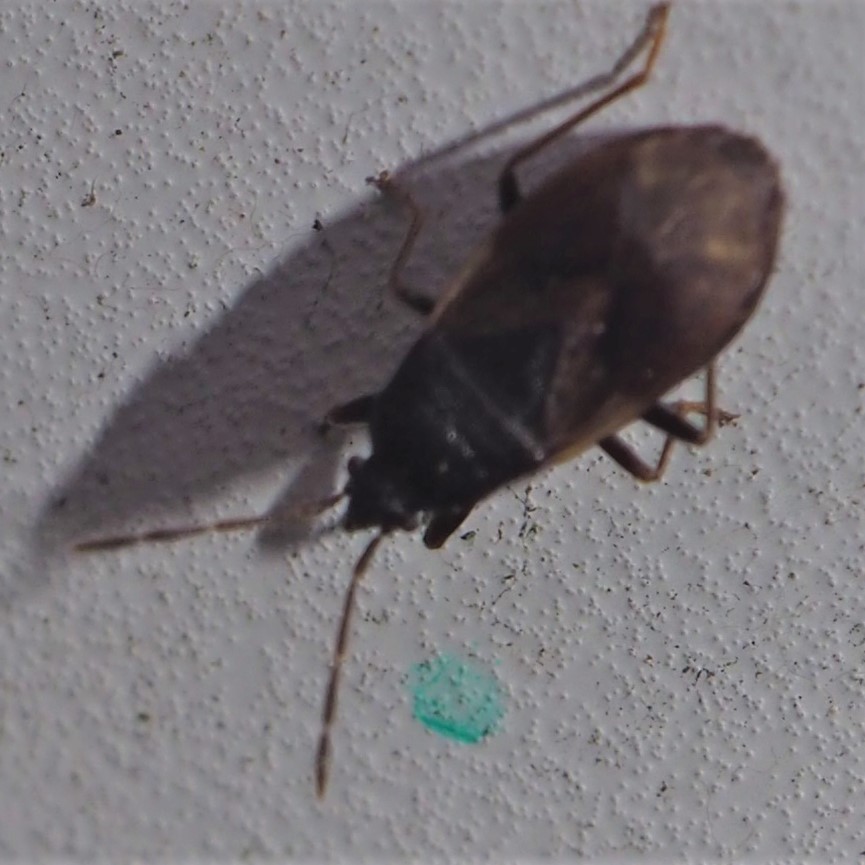
Now to the Leafhoppers. First is in genus Balclutha. Then an old favorite, Erasmoneura vulnerata. Third is a basic pattern for genus Erythridula.
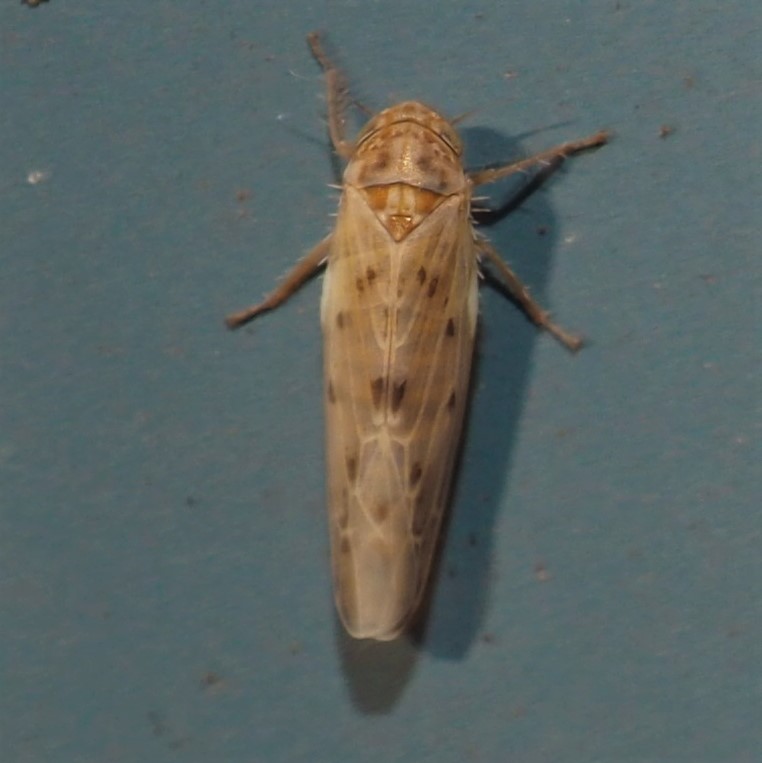
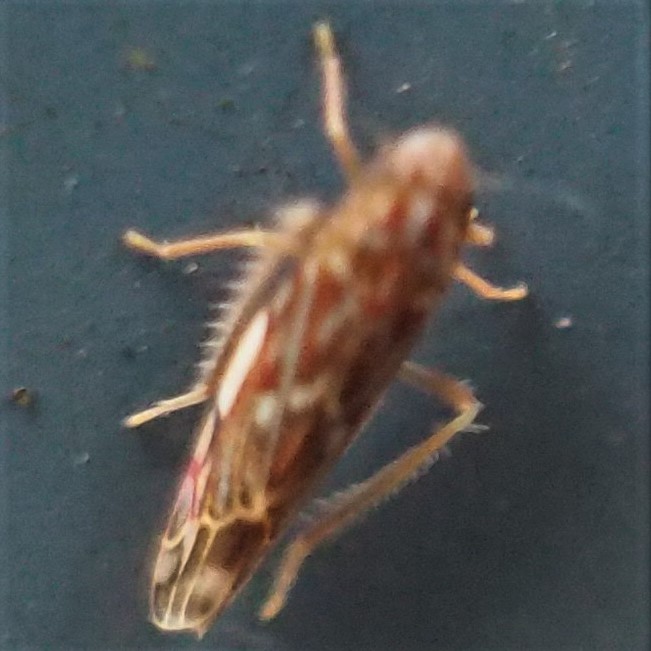
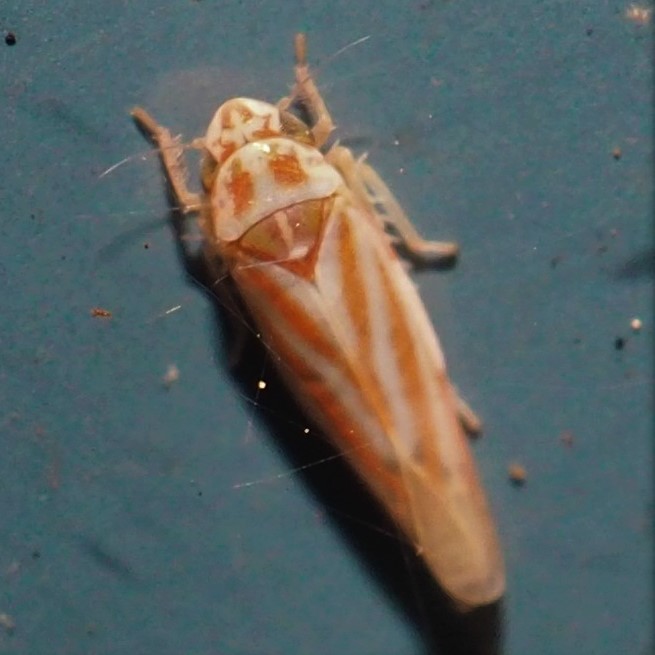
Here are some Eratoneura Leafhoppers. First is one of the basic designs. Then the "dotted" version. Third is one that actually has a species name, Eratoneura era! And so has number 4, that is, Eratoneura ardens.

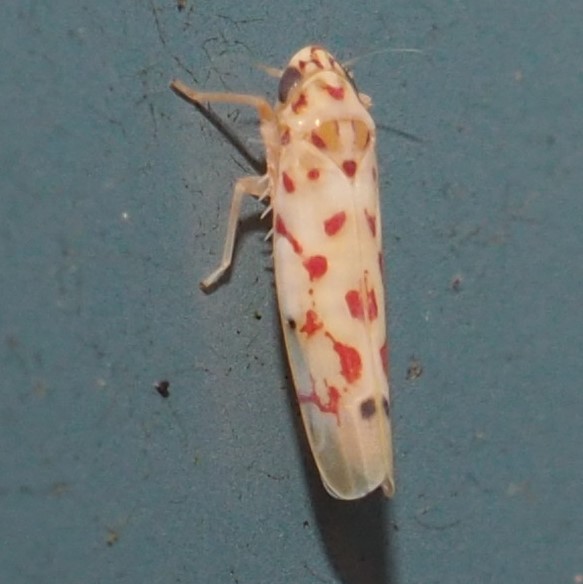
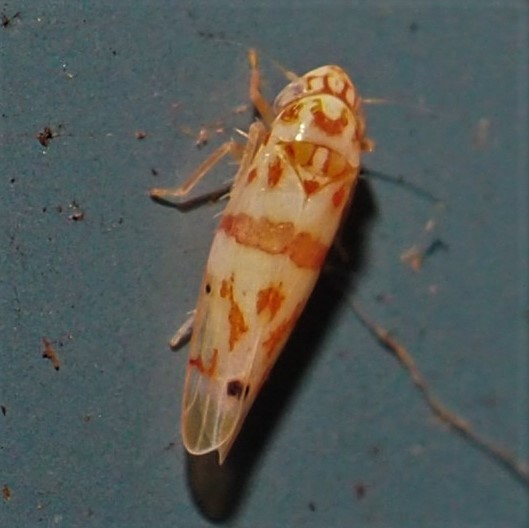

Just a few more Bugs. The beloved ID app in iNat came up with Harmostes fraterculus for this first (and second) one. Third is another of those Stink Bugs in genus Euschistus that are so hard to differentiate. And fourth is another of those Pachypsylla that cause galls in Hackberry.
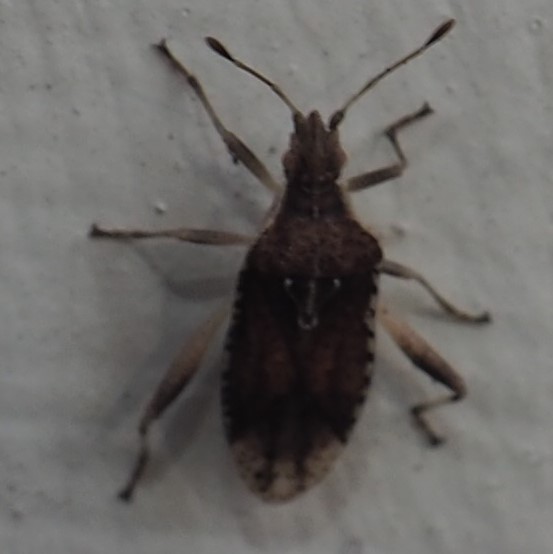

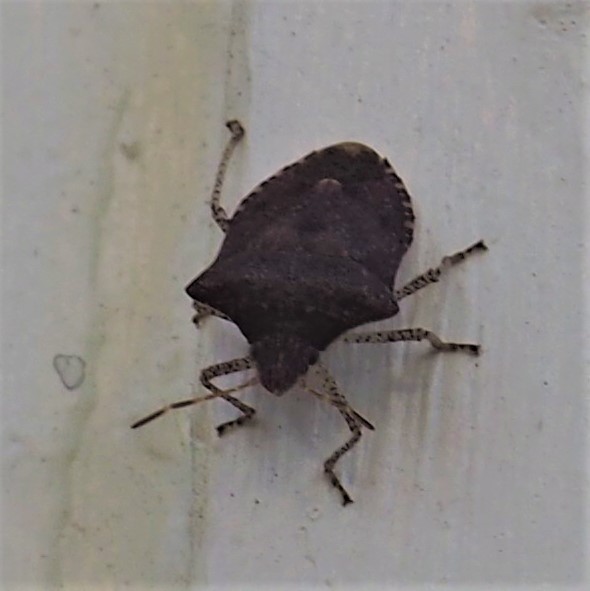
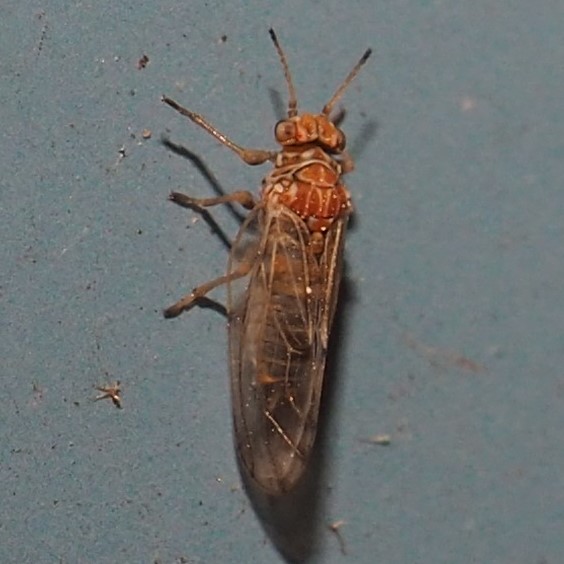
Here we are with the Flies. As usual, we start with the Crane Flies. I wonder if you can guess which of these three is a male? What tipped you off? Remember what distinguishes male Mosquitoes and Midges from females? :-) Hint: these three pet Flies have nicknames Sally, Roger and Karen.
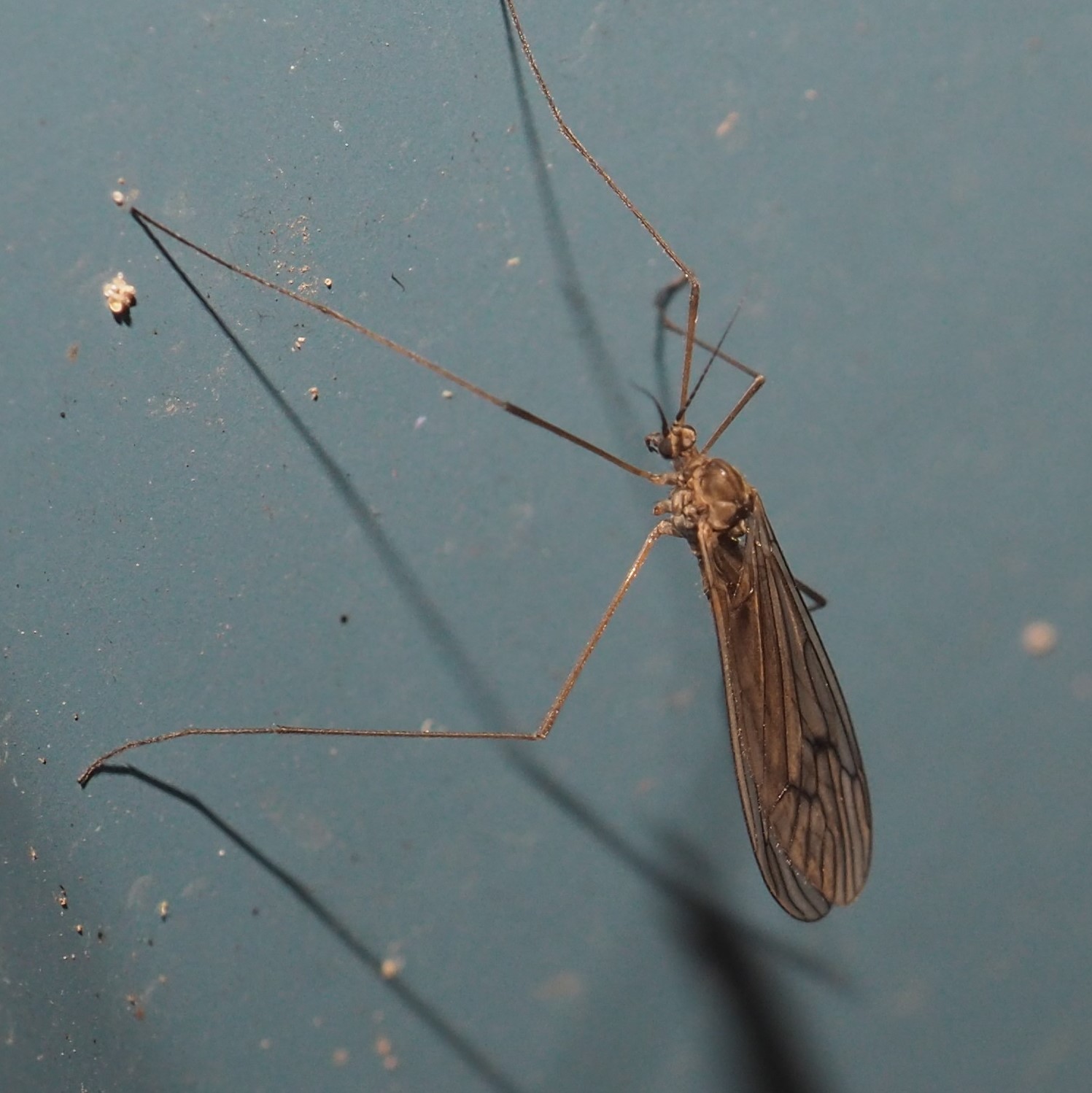
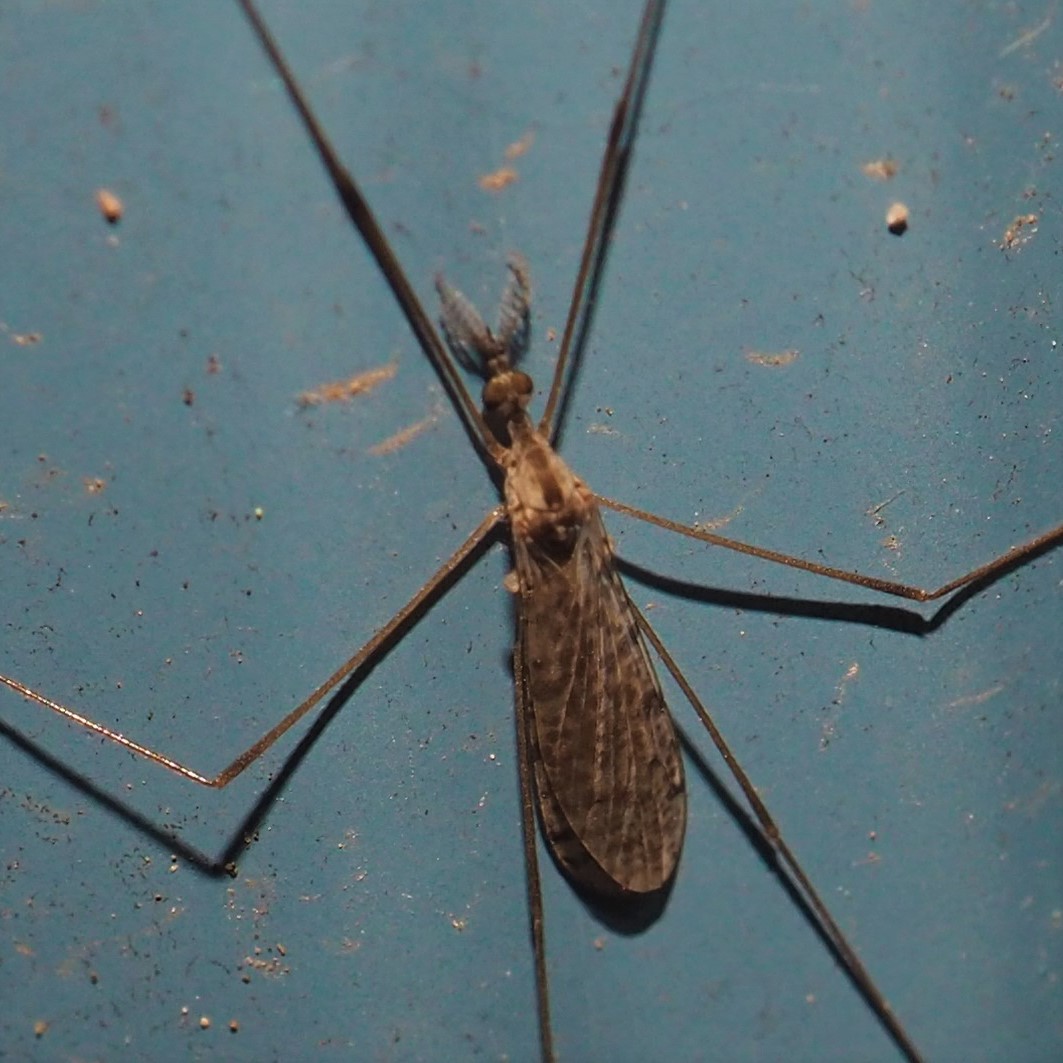
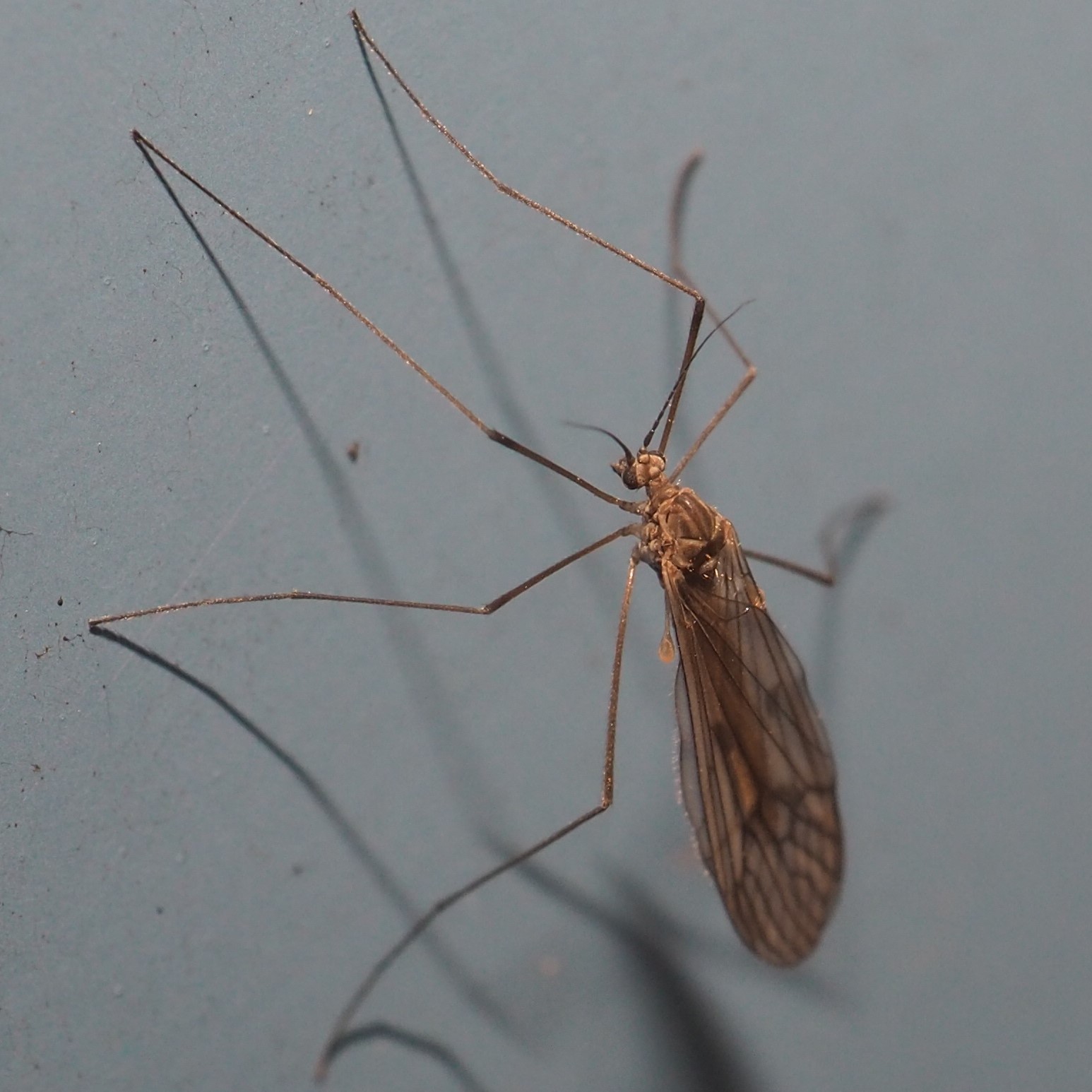
Speaking of Mosquitoes, let's see what we bagged this week. I'll bet that soon you are all going to recognize this Asian Bush Mosquito when you see it. This one is a female, by the way. This bright red fly is at least related to the Dung Flies. The third loves its iridescent wings. And the fourth was identified as a non-biting midge on iNat.

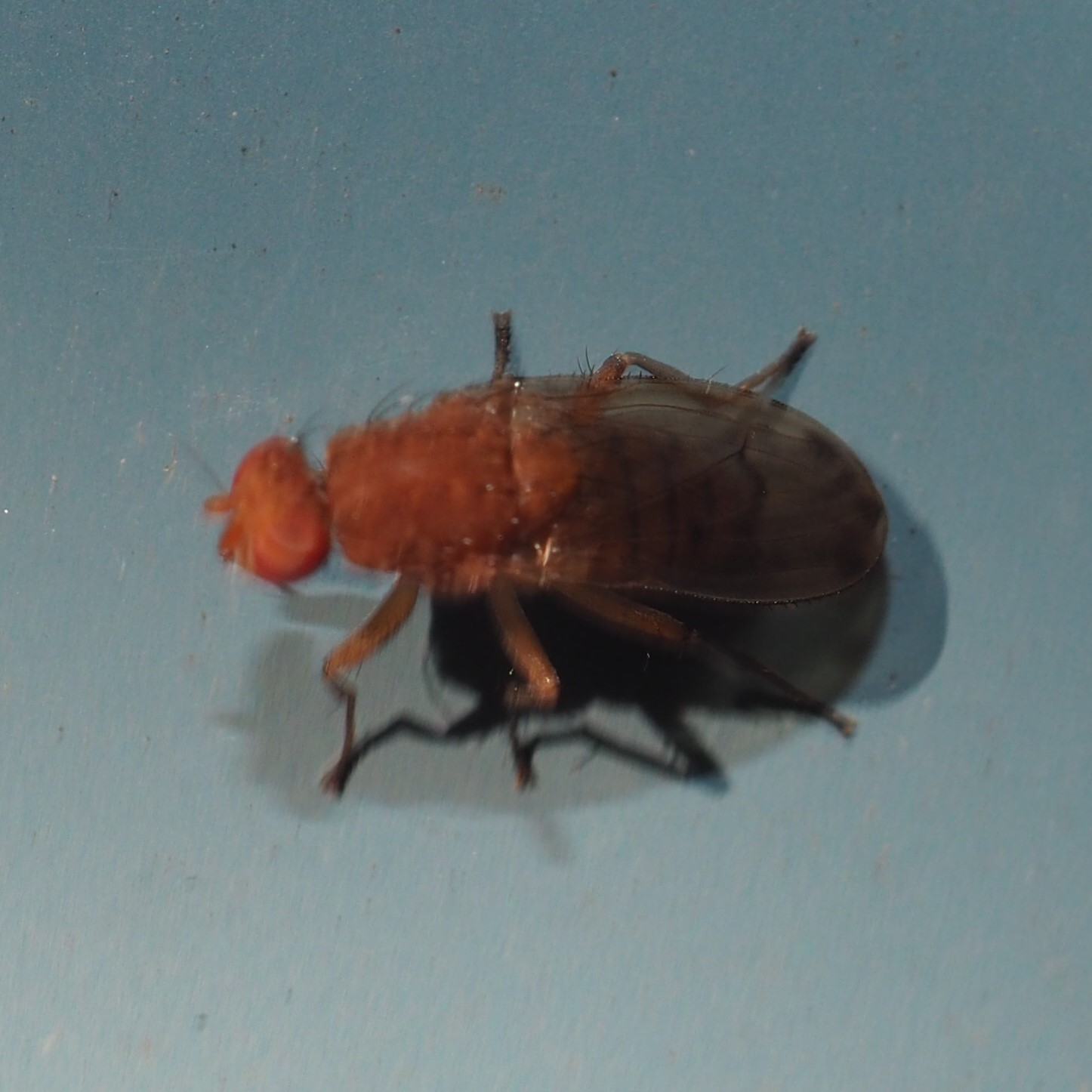
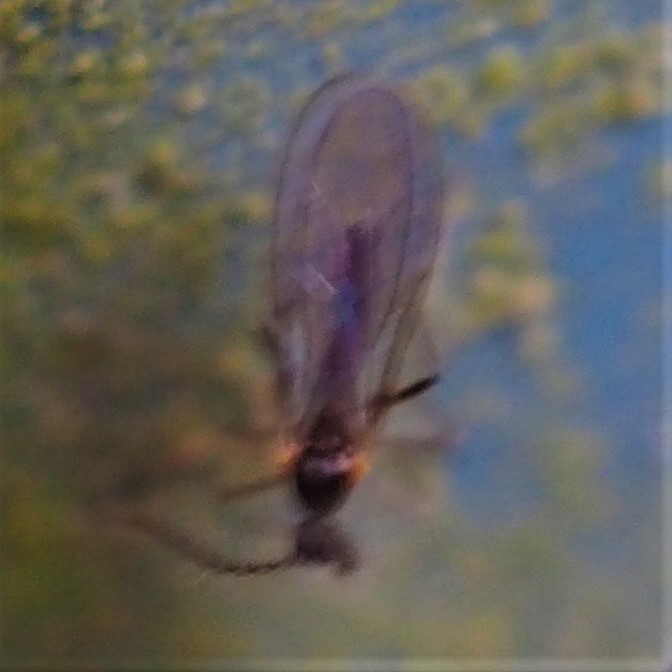
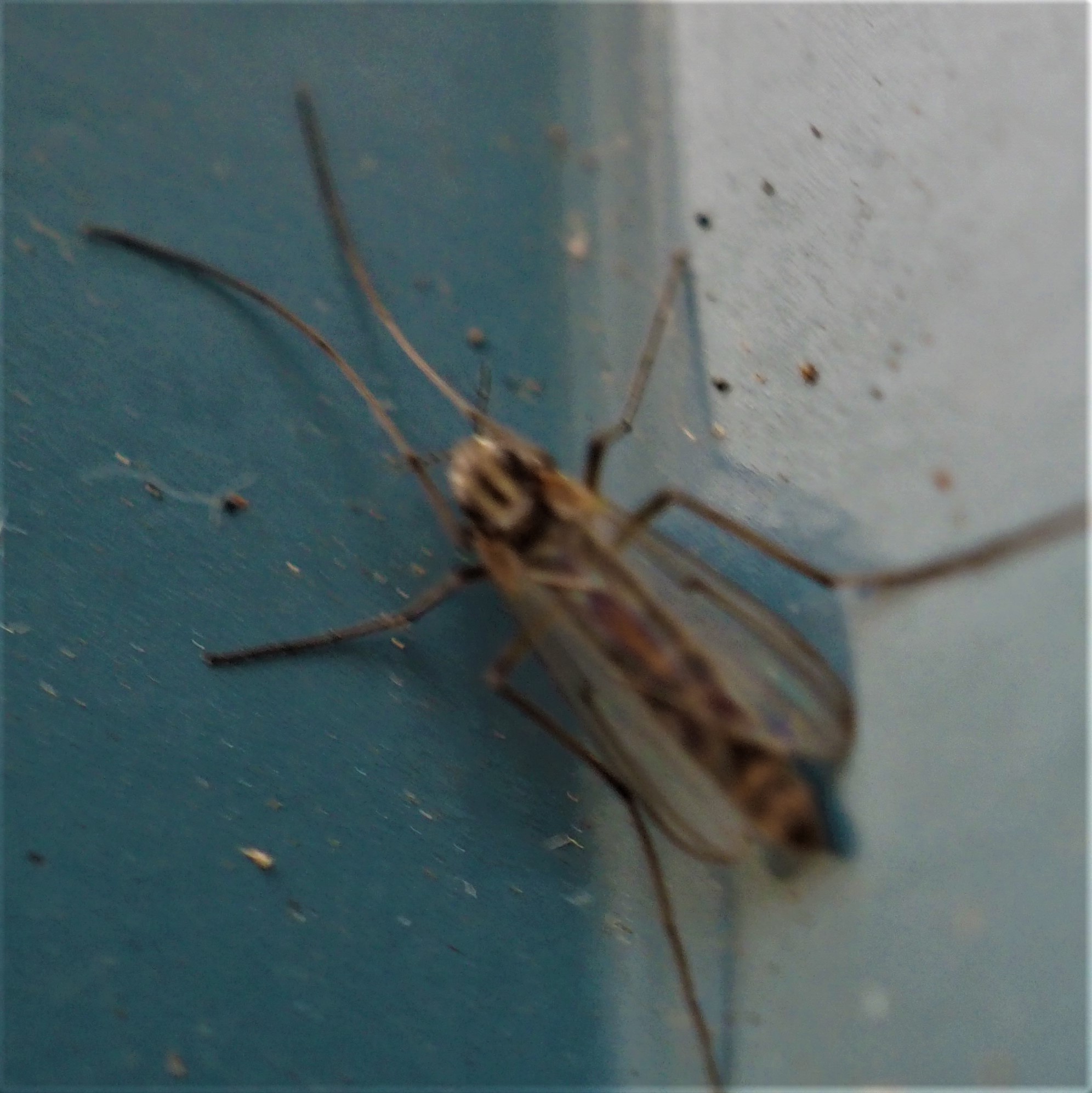
Two little Moths - much smaller than the Bathroom Moth Flies. Or are they Moth Flies themselves? A tiny variety? Since there aren't any other Moths, it must be time for us to trudge through the wet leaves to see what kind of colorful things we can find.

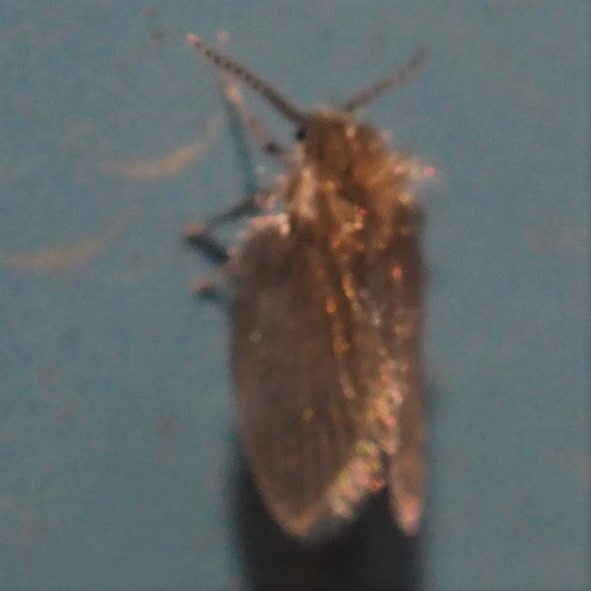
Here's the Coralberry. I love it especially because it waited till this year for me to finally see it. The Euonymus is getting very red now, and looks especially inviting when someone comes to the house.
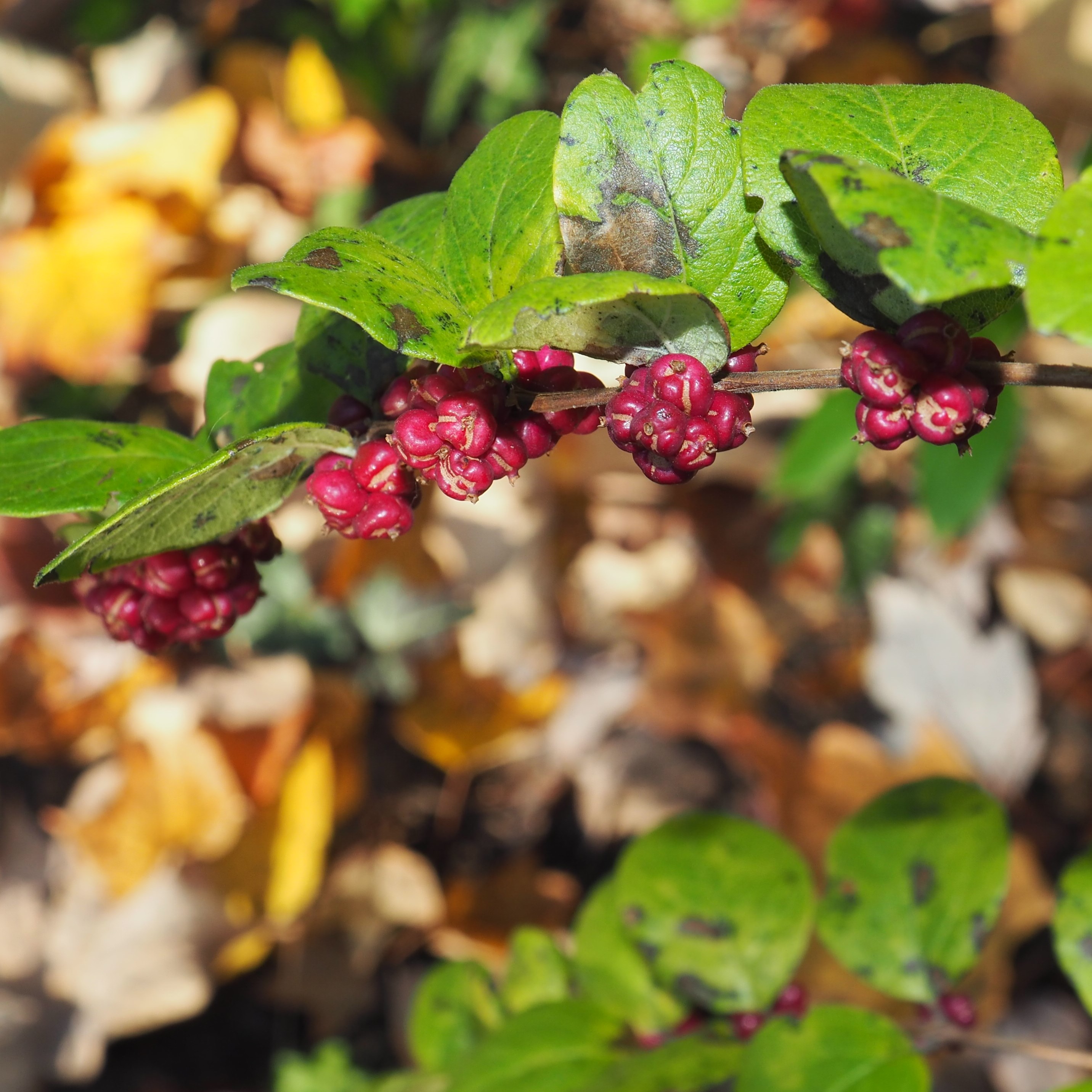
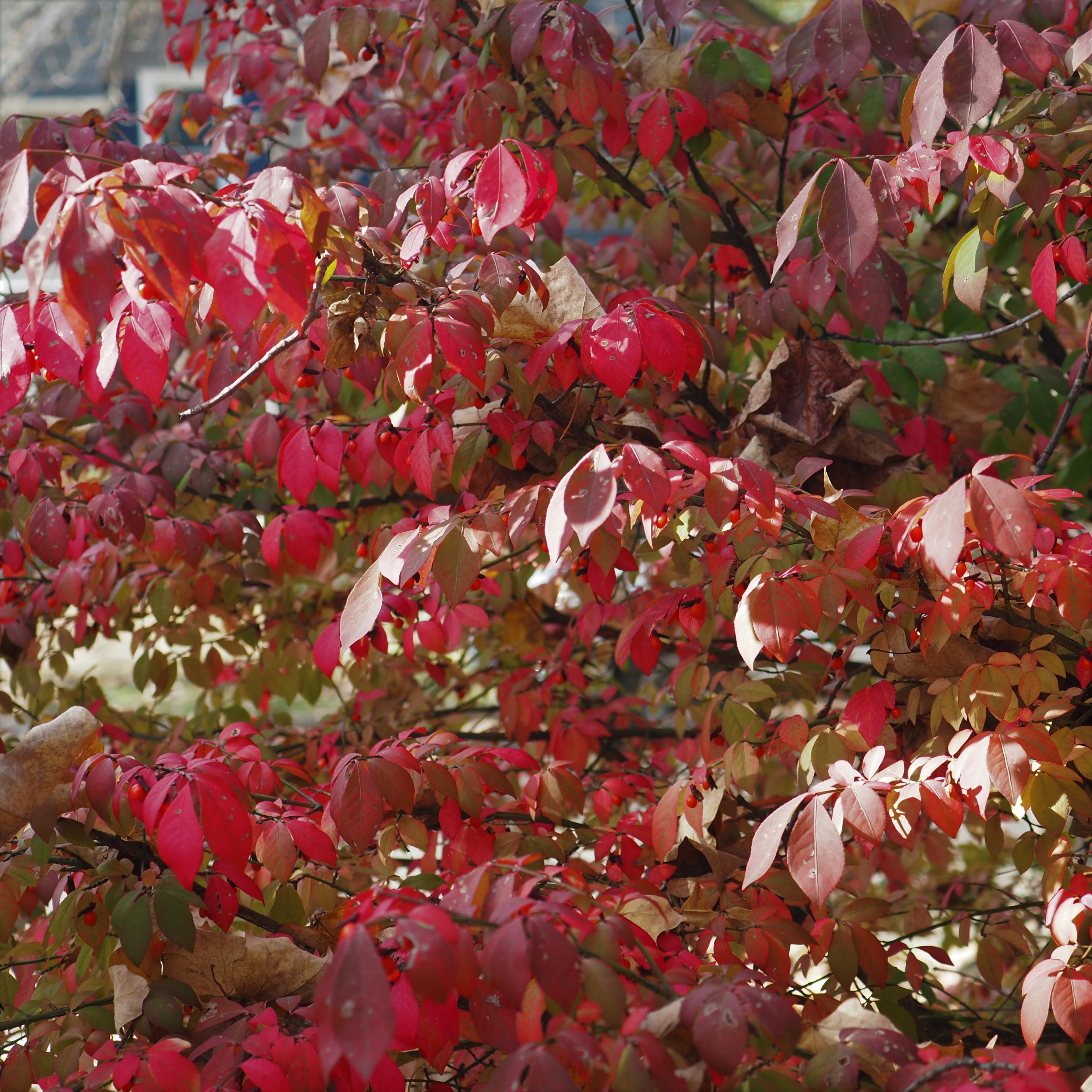
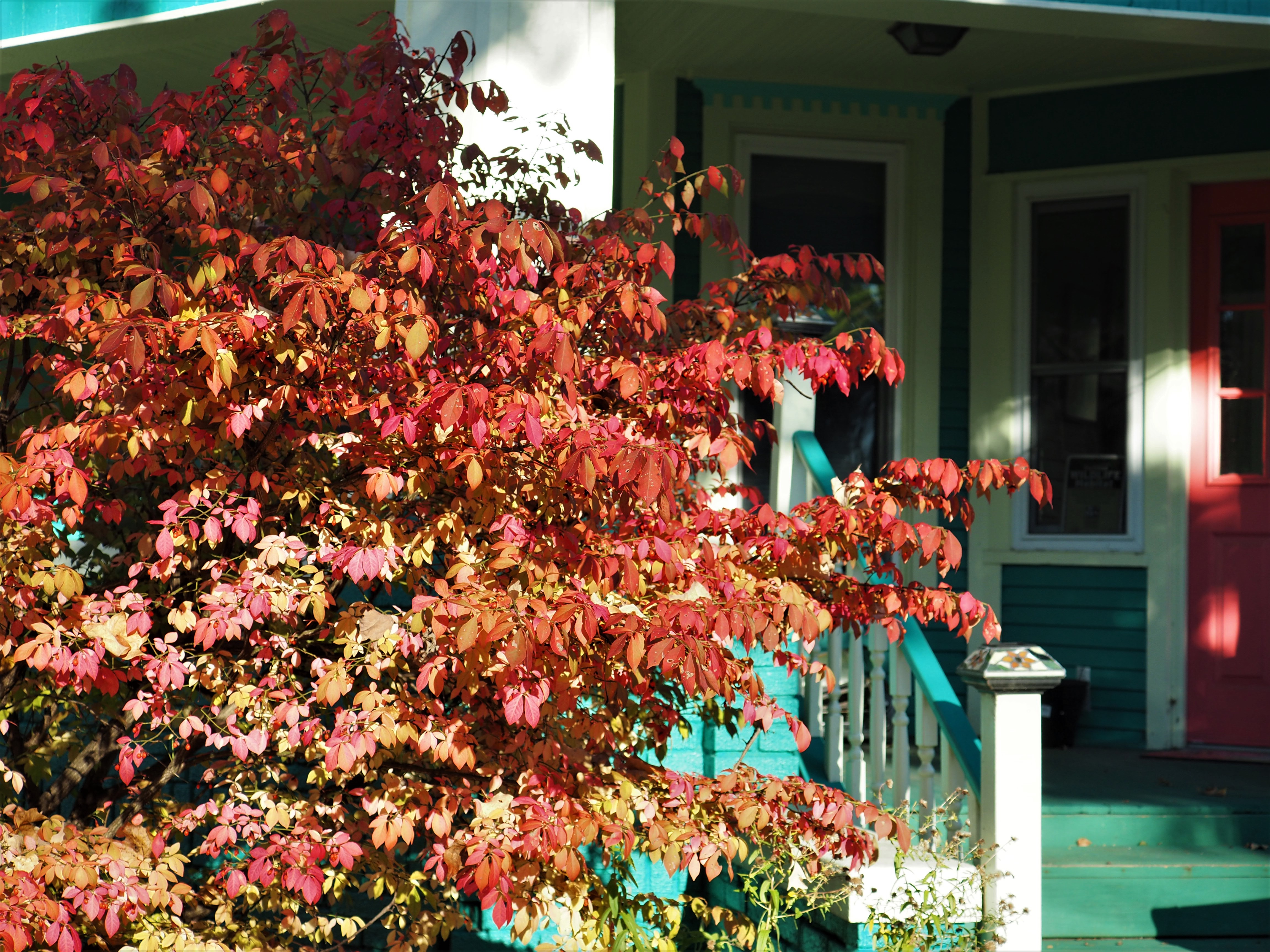
The wilderness patch in the side yard still sports the yellow-and-orange Bittersweet. Looking north, the leaves which lie across the sidewalks show the former colors of their trees. At the south end of the street, here is an enormous golden-leaved Maple.
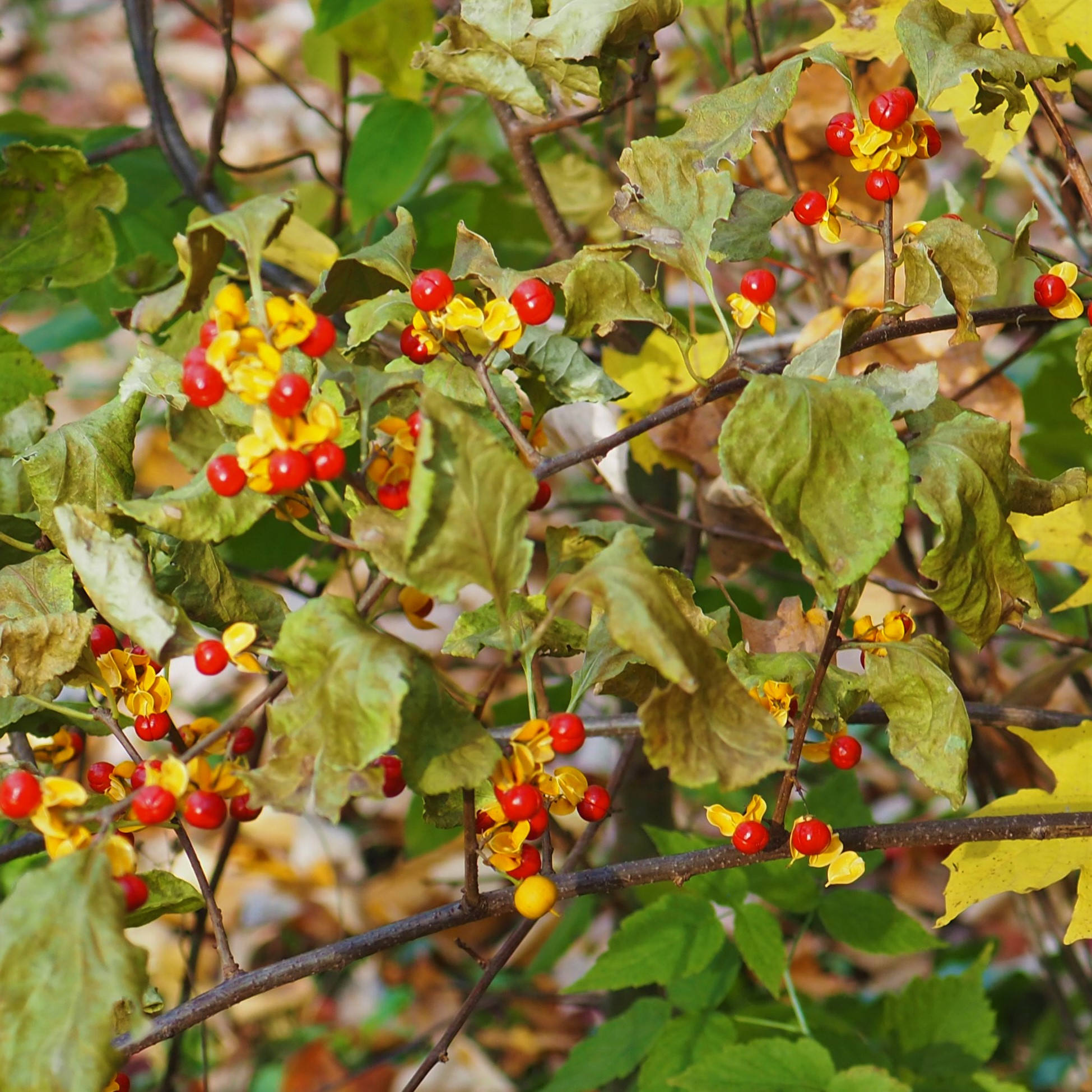
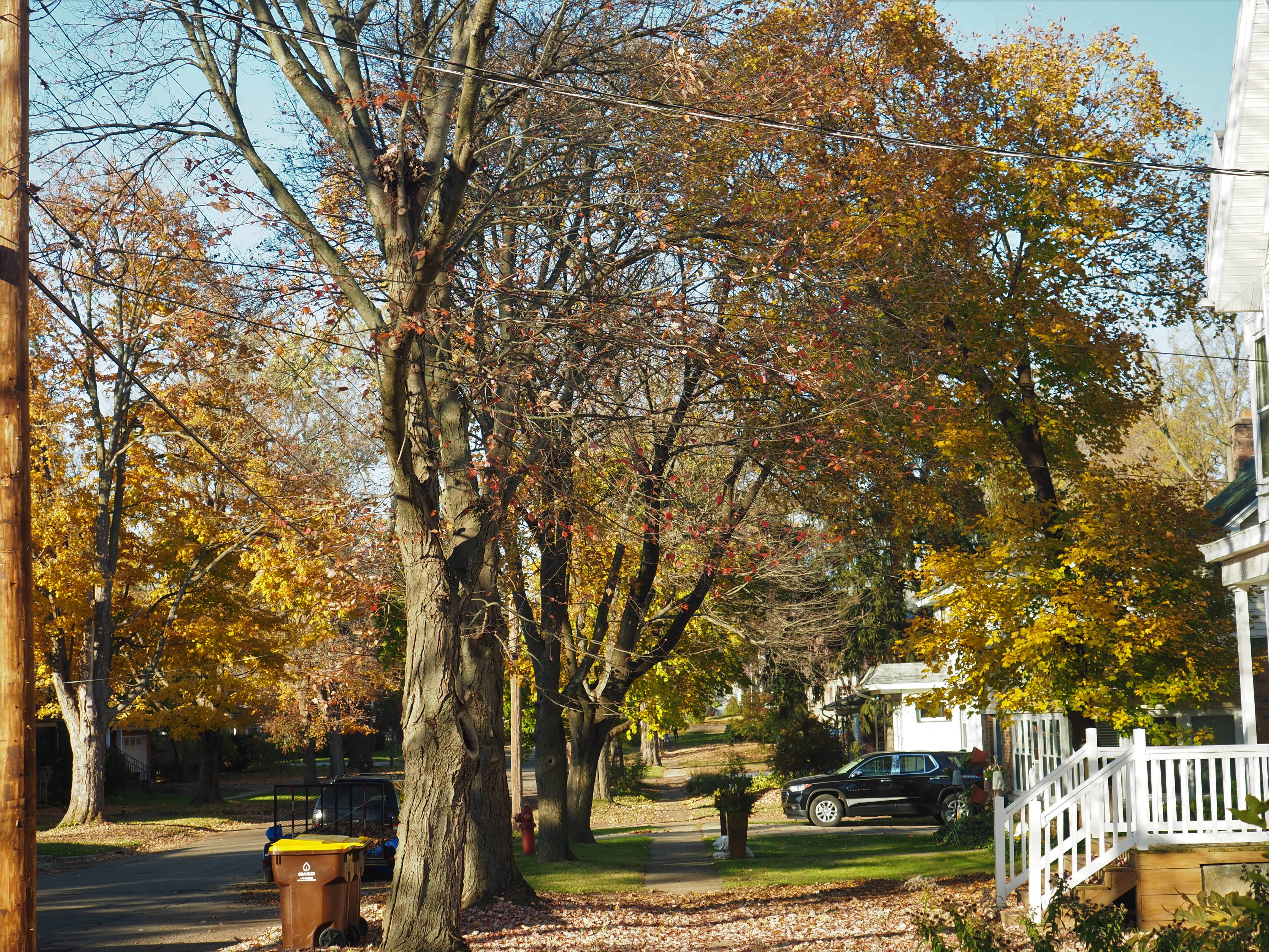

Almost to the Spiders! But first, a Spider's cousin, a Harvestman. A Common House Spider. And a mystery Cobweb Spider (maybe).
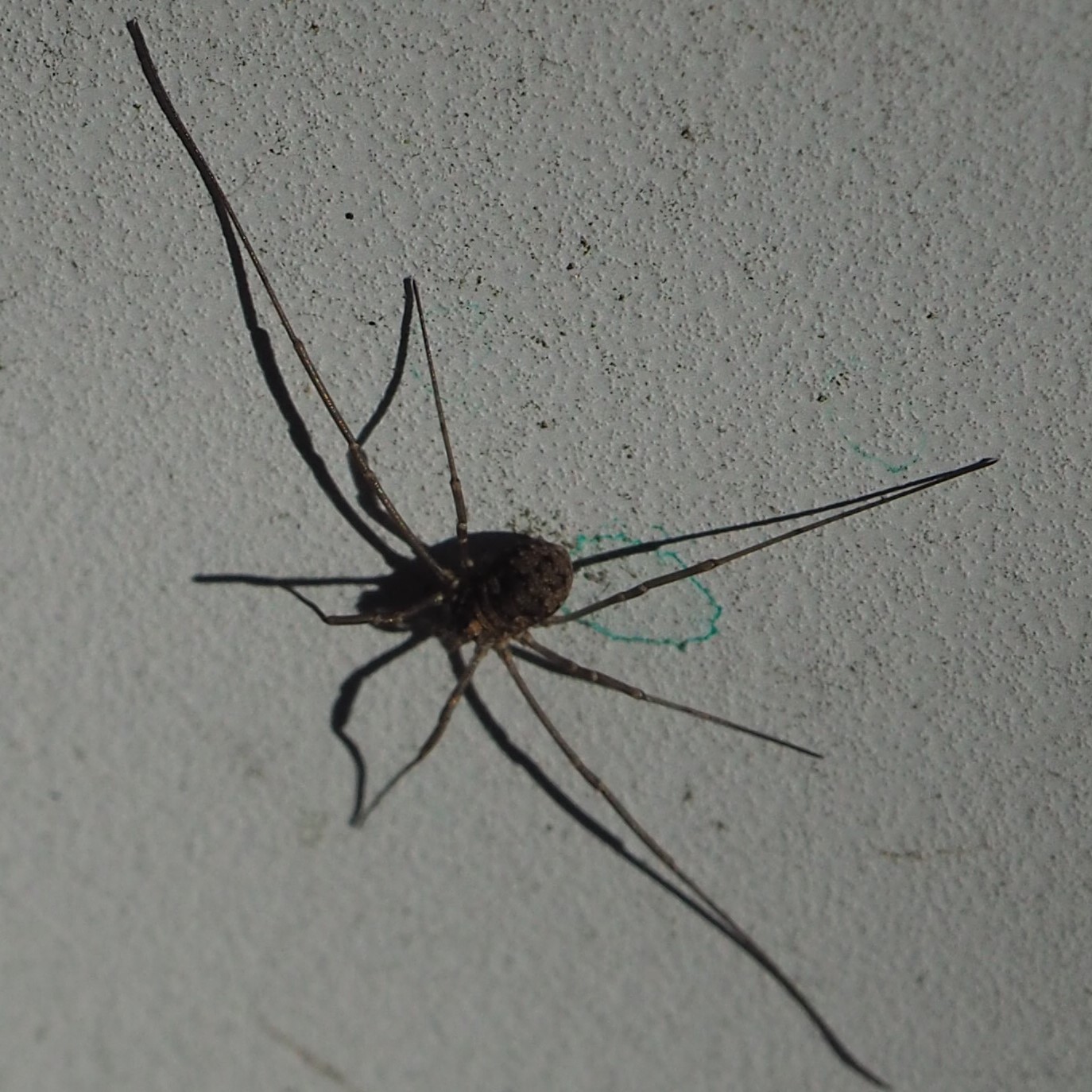
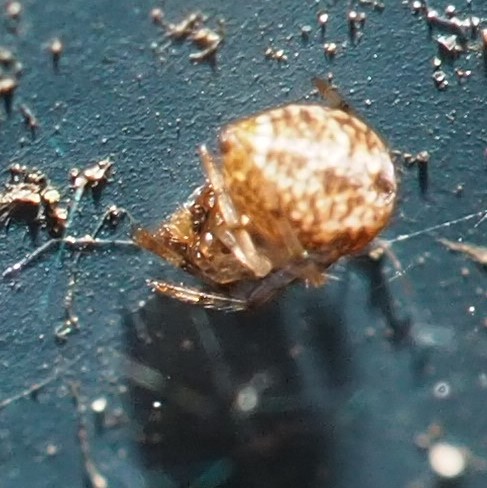
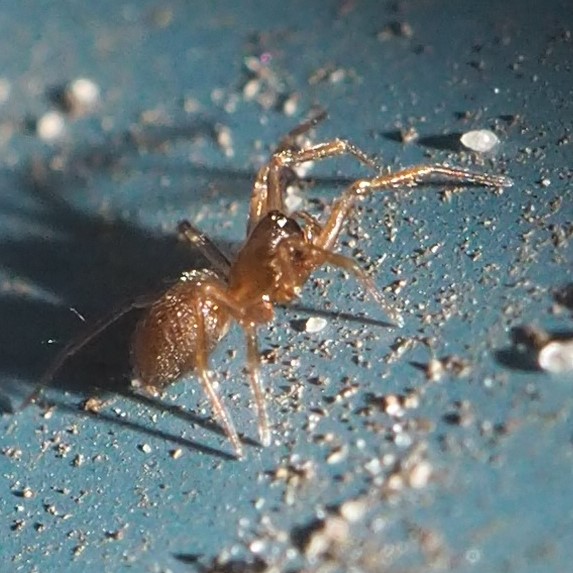
We are getting quite a lot of Wolf Spiders now, especially the ones called "thin-legged". I would rather call them the floppy-legged Wolf Spiders, since the legs look very, well, floppy. To give you an idea how very small these spiders actually are, the first one here was sitting on Jadesy's leaf.
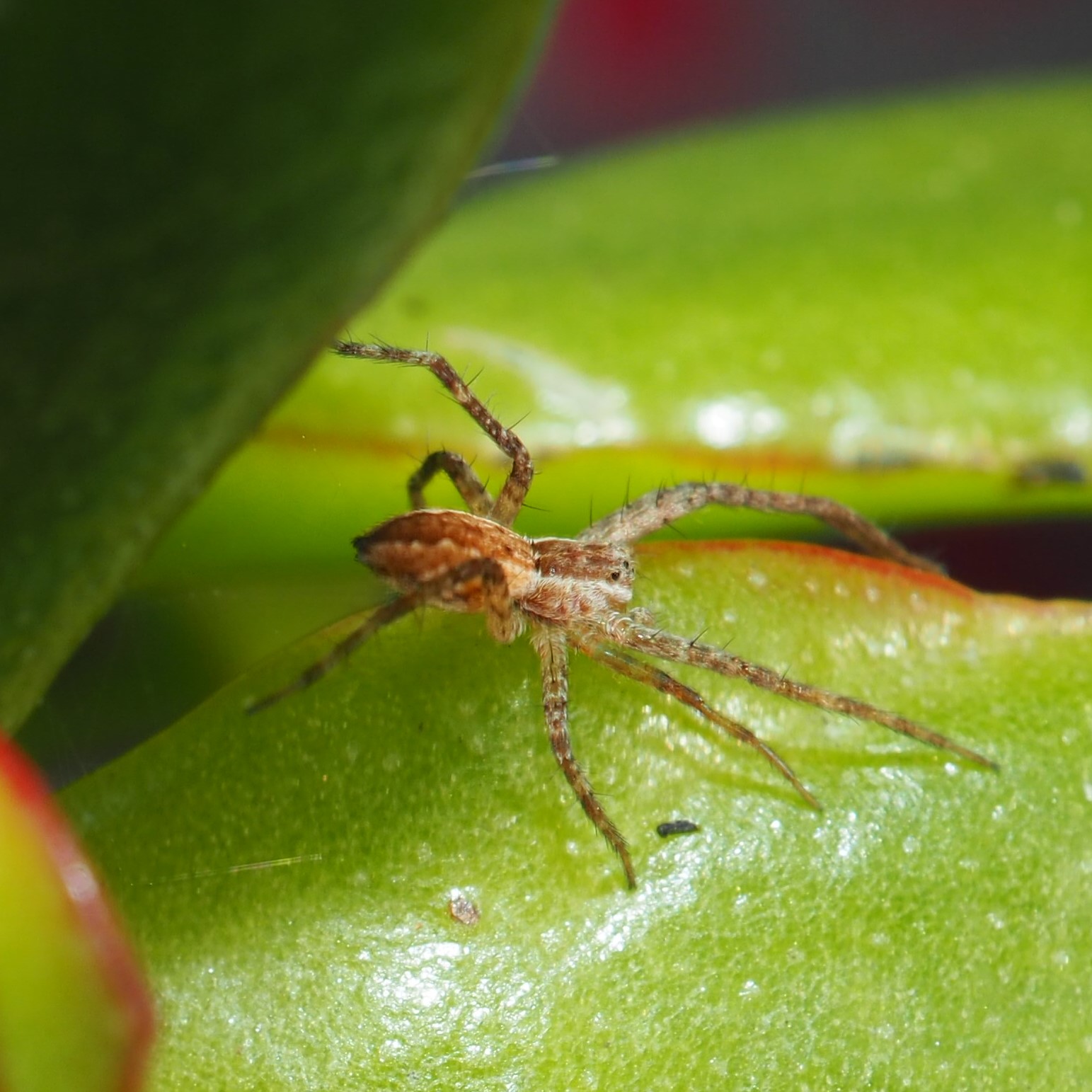
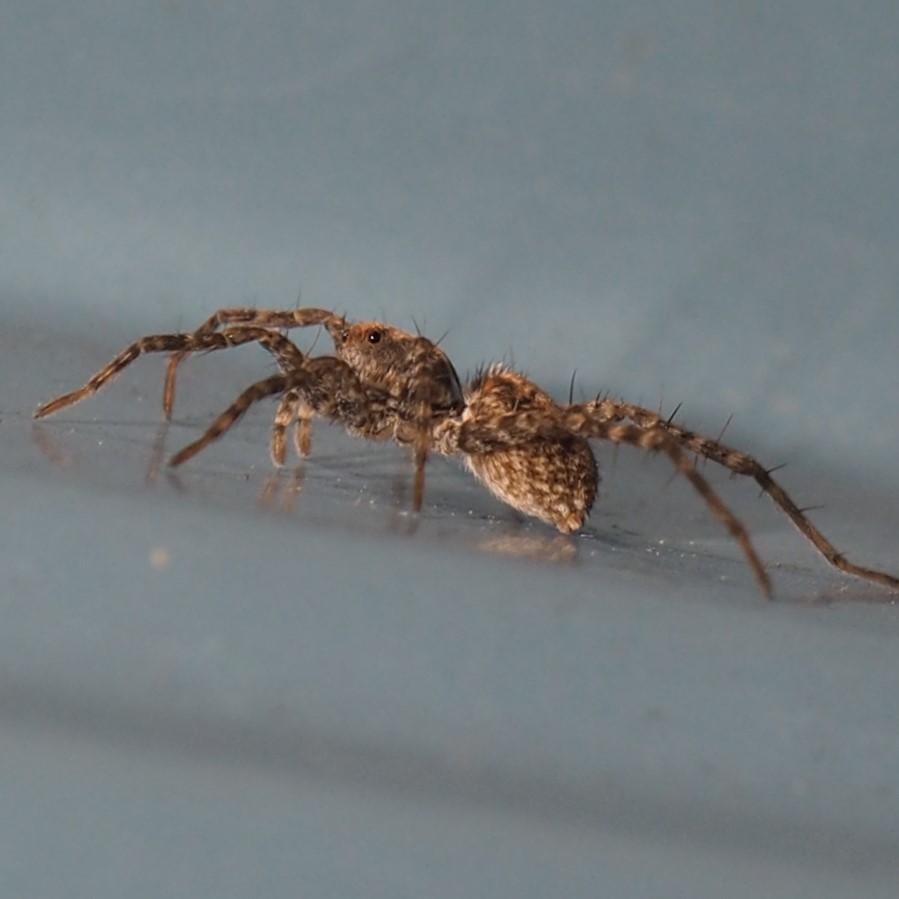
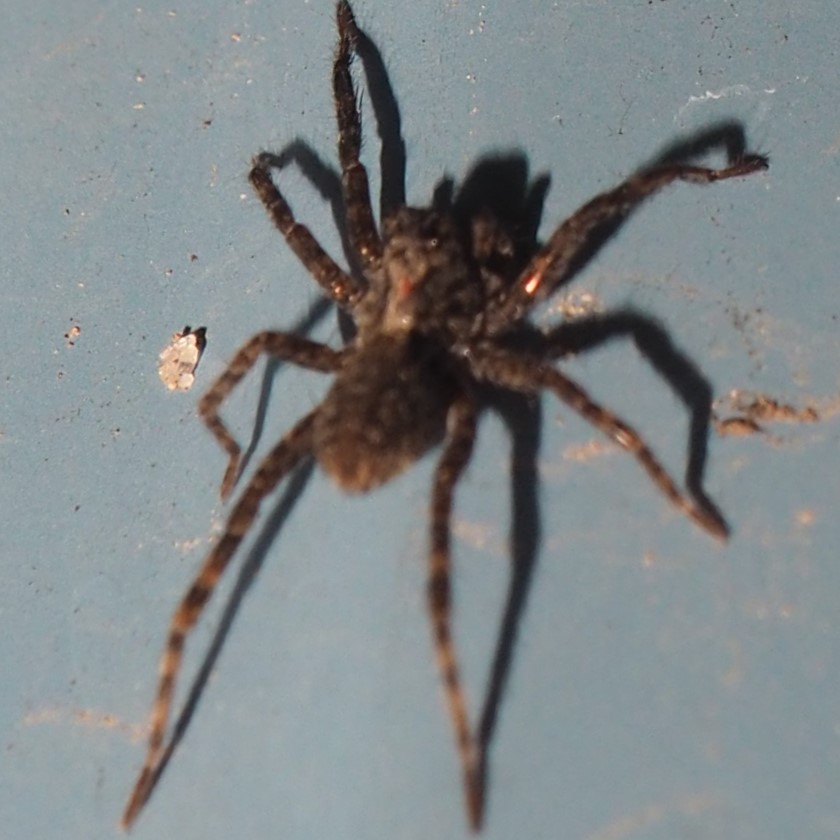
Here are just a few more images of those Ant-mimicking Spiders.
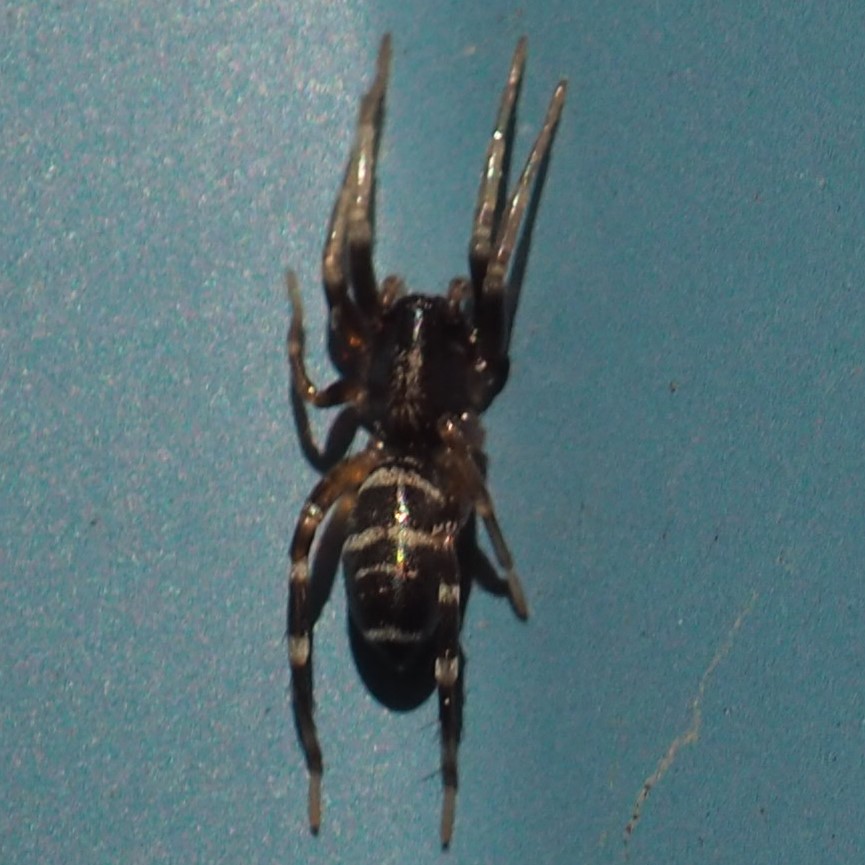


There was really only one nice newish Wasp for us. This one is called an Encyrtid Wasp, genus Microterys. The last one looks like the one we saw last week, with the fleshy antennae.
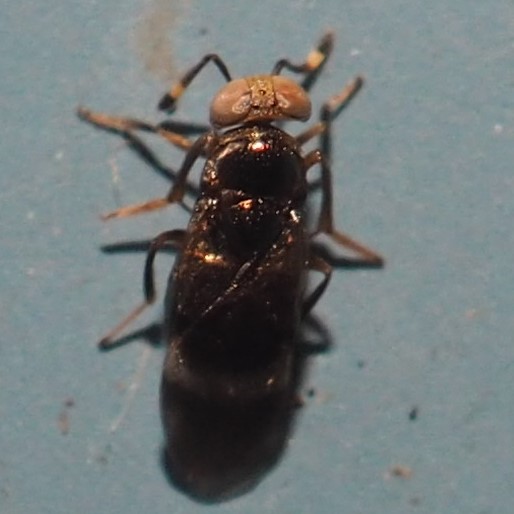
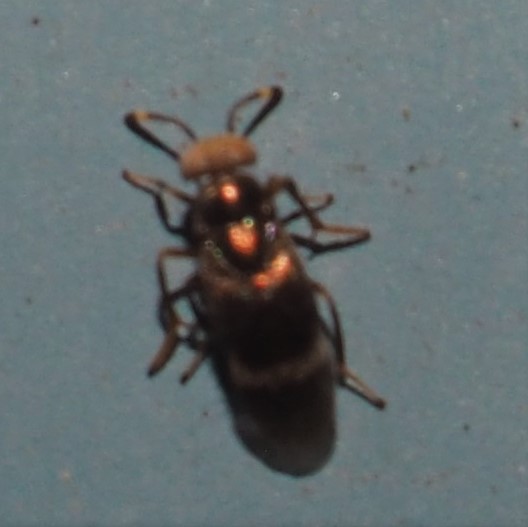
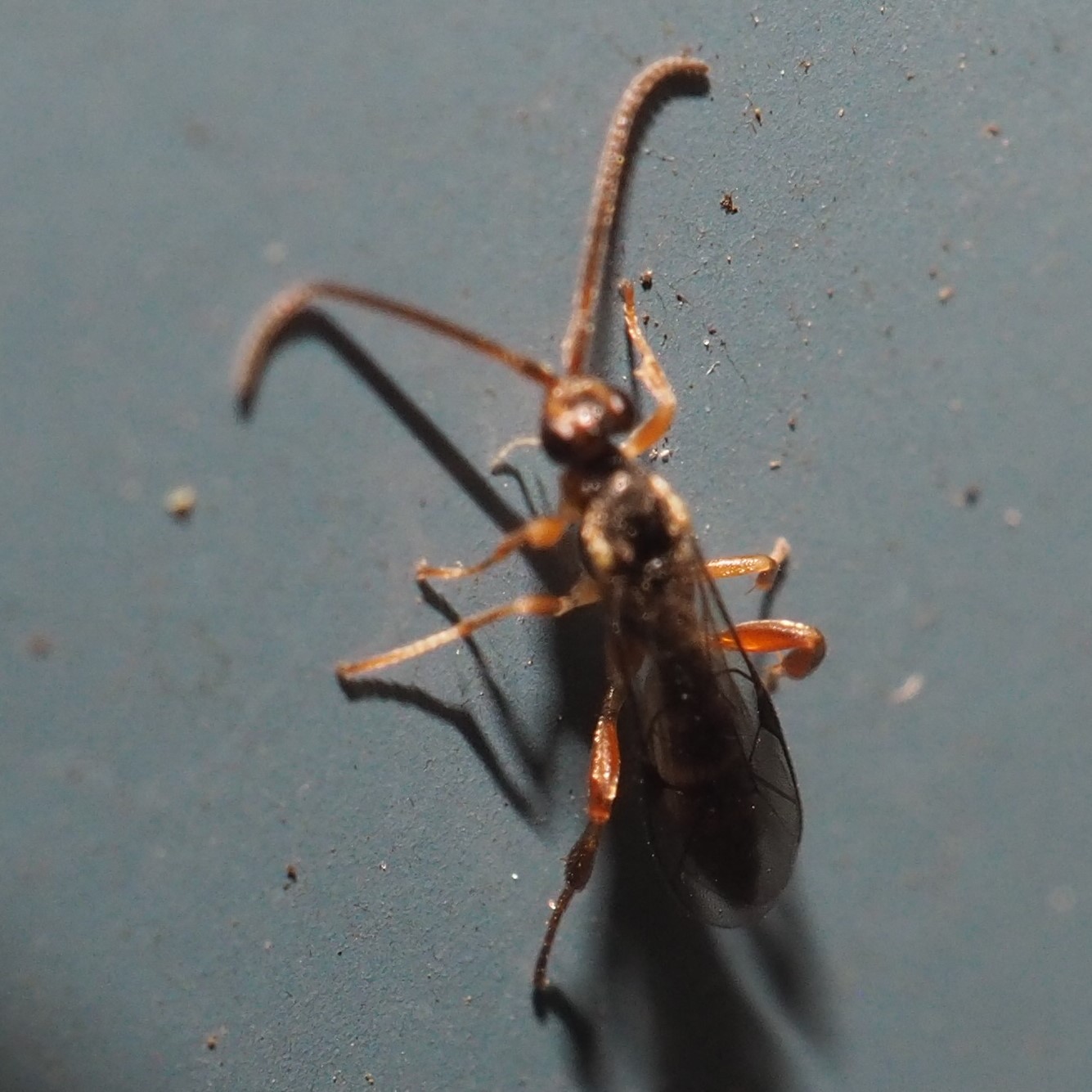
Poor old Pond. Yesterday the leaves were so thick that Chaim had to help me drag the net out. Then I was able to dump all the leaves out of it and then replace it. Picture 2 shows it this morning, still pretty empty. Picture 3 shows a couple of bright-red fishes through the net. The Redbud leaves have now almost all come down, but that Norway Maple always hangs onto its yellow leaves longer than most of the other trees, and so I suspect we are going to see the net full again before it's all over. By the way, this morning the temperature was 37 F, and in a couple of days they are promising temps in the 20's. With warmish days in between. I have to decide soon when dear old Jadesy should come in, flowers or no. It's now been two weeks later than last year's date of getting too cold for Jadesy.
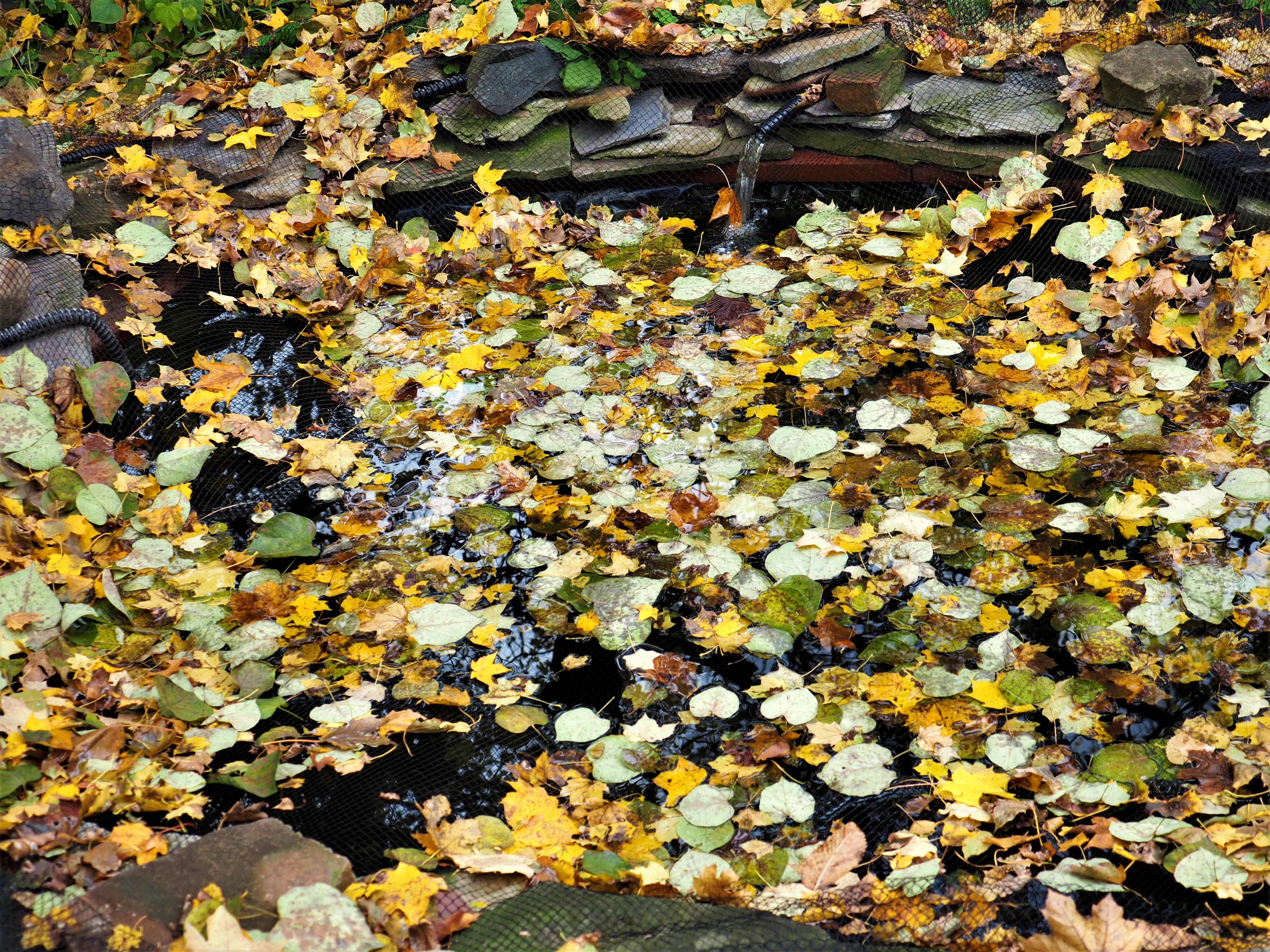
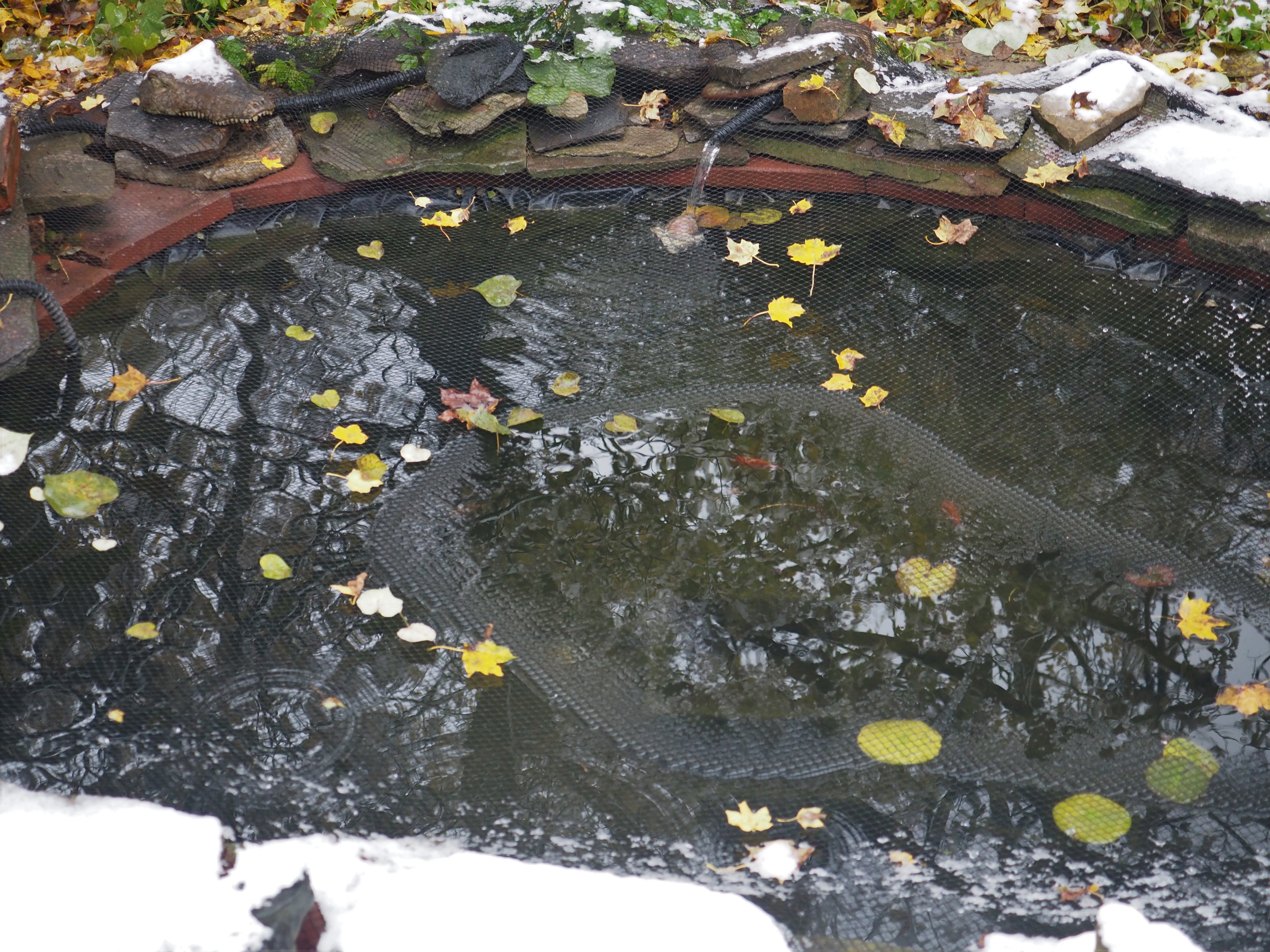
Maybe it will help us survive the winter if we remember this picture, taken in April of this year, after our fish family's first winter at the bottom of the new pond. A few more months, if you can stand it, and they will be bigger and even more colorful than they are now.

Yes, we have a while to wait to see the pond and yard more colorful than ever. Let's hope that those puny new lily corms will have gotten stronger and more nearly ready to make beautiful blooms. If they don't, I will now brave going to the Pet Station in Jackson to see if they have once more big healthy lily corms that will bloom during the long summer 2022. I hope for everyone something wonderful to occupy your big healthy minds during the winter to come. Thank you all for being here! May a magical Turkey come down everyone's chimney all ready to enjoy! Oh dear, that's next week, isn't it? Maybe for this week, we can all practise-imagine that big Bird practice-descending onto our table any time we think of it.
Love, Martha
Back to November 7, 2021
Forward to November 21, 2021
Back to main menu
copyright Martha O'Kennon 2021



















































































